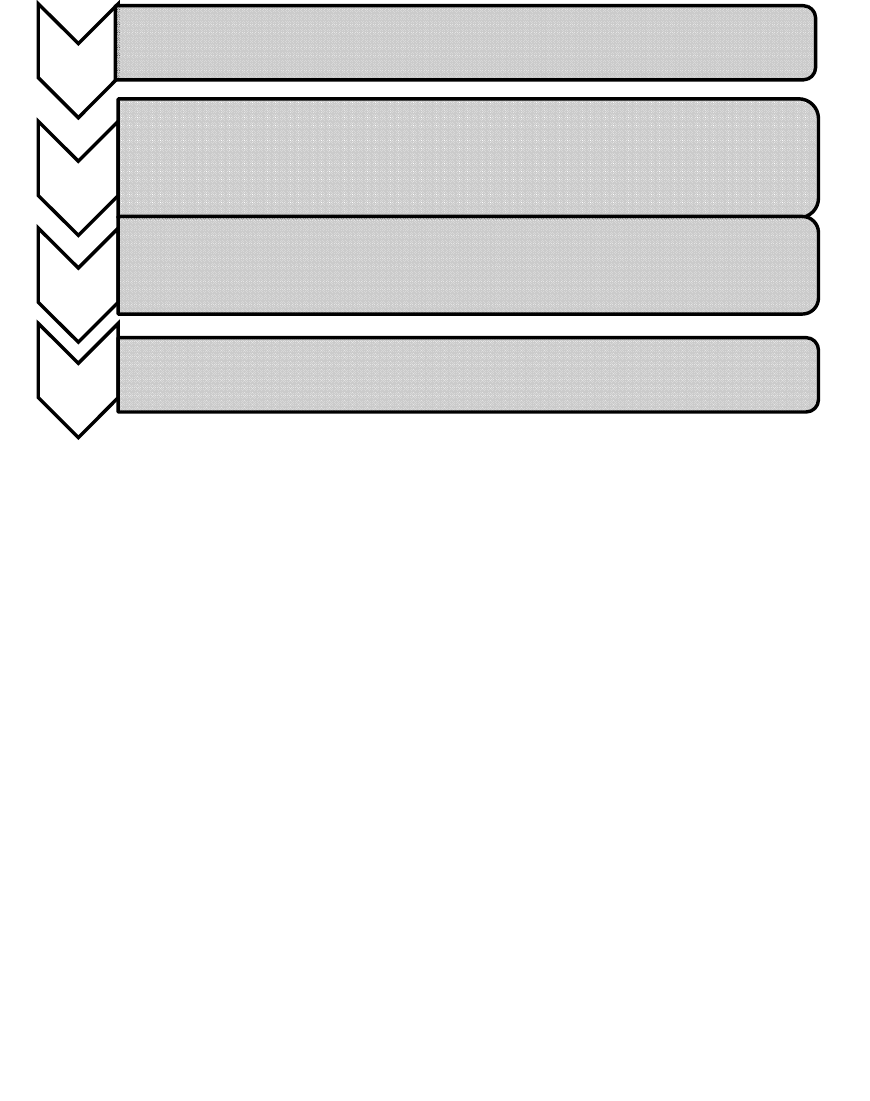
Walden University Walden University
ScholarWorks ScholarWorks
Walden Dissertations and Doctoral Studies
Walden Dissertations and Doctoral Studies
Collection
2023
The Reconciliation of Cognitive Dissonance Among Social The Reconciliation of Cognitive Dissonance Among Social
Workers in Substance Use Treatment Settings Workers in Substance Use Treatment Settings
Miranda Ashley Kieler
Walden University
Follow this and additional works at: https://scholarworks.waldenu.edu/dissertations
Part of the Social Work Commons
This Dissertation is brought to you for free and open access by the Walden Dissertations and Doctoral Studies
Collection at ScholarWorks. It has been accepted for inclusion in Walden Dissertations and Doctoral Studies by an
authorized administrator of ScholarWorks. For more information, please contact [email protected].

Walden University
College of Social and Behavioral Health
This is to certify that the doctoral dissertation by
Miranda A. Kieler
has been found to be complete and satisfactory in all respects,
and that any and all revisions required by
the review committee have been made.
Review Committee
Dr. Sean Hogan, Committee Chairperson,
Social Work Faculty
Dr. Lindy Lewis, Committee Member,
Social Work Faculty
Dr. Alice Yick, University Reviewer,
Social Work Faculty
Chief Academic Officer and Provost
Sue Subocz, Ph.D.
Walden University
2023
Abstract
The Reconciliation of Cognitive Dissonance Among Social Workers in Substance Use
Treatment Settings
by
Miranda A. Kieler
MSW, Clarke University, 2016
BSW, Clarke University, 2015
Dissertation Submitted in Partial Fulfillment
of the Requirements for the Degree of
Doctor of Philosophy
Social Work
Walden University
February 2023
Abstract
Although harm reduction (HR) and abstinence-based treatment approaches are both
useful in addiction treatment, the former is less accepted and integrated into practice.
Social workers who embrace an HR approach but who work at substance abuse treatment
facilities that are abstinence based may experience cognitive dissonance because they
perceive their work role to be incompatible with social work practice values and
education. Little was known regarding how practitioners with a Master of Social Work
(MSW) degree experience and reconcile cognitive dissonance related to their HR
education and abstinence-only practice in substance use treatment centers. To address this
gap in the literature, a generic qualitative study was conducted using Festinger’s
theoretical framework of cognitive dissonance. A purposive sampling procedure was
used to recruit eight participants, all of whom were MSWs at least 21 years old who had
at least 1 year of experience working in a substance use treatment setting. Thematic
coding was used to analyze data from semistructured interviews. Themes included
challenges at the micro, mezzo, and macro level; the presence of other MSWs and years
of working experience; use of social work practice skills; the practice of switching jobs;
and engagement in self-awareness and cultural humility practices. The findings may
inform clinical social workers about HR practices across systems and administrators
about curriculum development in MSW programs. The findings may also be pertinent to
advocates and policy makers who want to increase the use of HR. More acceptance of
HR in substance abuse treatment facilities may help social workers to experience less
cognitive dissonance, which may improve working environments.
The Reconciliation of Cognitive Dissonance Among Social Workers in Substance Use
Treatment Settings
by
Miranda A. Kieler
MSW, Clarke University, 2016
BSW, Clarke University, 2015
Dissertation Submitted in Partial Fulfillment
of the Requirements for the Degree of
Doctor of Philosophy
Social Work
Walden University
February 2023
Dedication
To my loving husband, Lee, thank you for your ongoing and unwavering support.
Thank you for always believing in my capabilities and reminding me of them when I
experienced doubt or uncertainty. There is no one else I want to share adventures with in
this life. To our coming baby boy, you are, in simplest terms, the inspiration and drive
behind my professional and personal development. We cannot wait to meet you.
I would also like to dedicate this work to my parents and in-laws for their constant
support, love, and guidance. Thank you for being my personal cheering squad. Lastly, to
all the friends and family who genuinely expressed interest and excitement in this
journey, I am so thankful for you and the accountability you provided in my life. Thank
you all. I love every one of you more than I can adequately express in words.
Acknowledgments
To my chair, Dr. Sean Hogan, thank you for your ongoing encouragement,
direction, and support. I am grateful to have learned from your expertise during this
journey and to have had the opportunity to work together. We cross this finish line
together. I would also like to thank Dr. Lindy Lewis, my second committee member, and
Dr. Alice Yick, my university research reviewer, for their meaningful contributions and
continuing support.
i
Table of Contents
List of Tables .......................................................................................................................v
List of Figures .................................................................................................................... vi
Chapter 1: Introduction to the Study ....................................................................................1
Background ....................................................................................................................4
Problem Statement .........................................................................................................7
Purpose of the Study ....................................................................................................11
Research Questions ......................................................................................................11
Theoretical Framework ................................................................................................12
Nature of the Study ......................................................................................................13
Definitions....................................................................................................................14
Assumptions .................................................................................................................16
Scope and Delimitations ..............................................................................................17
Limitations ...................................................................................................................19
Significance..................................................................................................................20
Summary ......................................................................................................................22
Chapter 2: Literature Review .............................................................................................23
Literature Search Strategy............................................................................................24
Theoretical Framework ................................................................................................25
Cognitive Dissonance Among Social Workers..................................................... 28
Literature Review Related to Key Variables ...............................................................31
History of the Harm Reduction Substance Use Treatment Paradigm ................... 31

ii
Prevalence of the Harm Reduction Approach in Substance Use Treatment ........ 34
History of the Abstinence-Based Substance Use Treatment Paradigm ................ 40
Prevalence of the Abstinence-Based Approach in Substance Use
Treatment .................................................................................................. 43
Social Work Education and Harm Reduction ....................................................... 45
Gaps in the Research ............................................................................................. 49
Summary and Conclusions ..........................................................................................49
Chapter 3: Research Method ..............................................................................................51
Research Design and Rationale ...................................................................................51
Role of the Researcher .................................................................................................55
Methodology ................................................................................................................58
Participant Selection Logic ................................................................................... 58
Instrumentation ..................................................................................................... 60
Procedures for Recruitment, Participation, and Data Collection .......................... 61
Data Analysis Plan ................................................................................................ 63
Issues of Trustworthiness .............................................................................................64
Ethical Procedures ................................................................................................ 65
Summary ......................................................................................................................67
Chapter 4: Results ..............................................................................................................68
Setting ..........................................................................................................................68
Demographics ..............................................................................................................71
Data Collection ............................................................................................................75
iii
Data Analysis ...............................................................................................................76
Coding ................................................................................................................... 77
Discrepant Cases ................................................................................................... 78
Evidence of Trustworthiness........................................................................................79
Credibility ............................................................................................................. 79
Transferability ....................................................................................................... 80
Dependability ........................................................................................................ 80
Confirmability ....................................................................................................... 80
Results ..........................................................................................................................81
Findings for Research Question 1 ......................................................................... 82
Findings for Research Question 2 ......................................................................... 97
Summary ....................................................................................................................104
Chapter 5: Discussion, Conclusions, and Recommendations ..........................................106
Interpretation of the Findings.....................................................................................107
Research Question 1: Experience of Cognitive Dissonance in Substance
Use Treatment Settings ........................................................................... 107
Research Question 2: Strategies for Reconciling Cognitive Dissonance ........... 110
Limitations of the Study.............................................................................................115
Recommendations ......................................................................................................116
Implications................................................................................................................118
Conclusion .................................................................................................................121
References ........................................................................................................................123
iv
Appendix A: Interview Guide ..........................................................................................136
v
List of Tables
Table 1. Summary of Participants' Professional Credentials ............................................ 74
Table 2. Summary of Years of Experience as a Master-Level Social Worker ................. 74
Table 3. Themes and Definitions for Research Question 1 .............................................. 81
Table 4. Themes and Definitions for Research Question 2 .............................................. 82
vi
List of Figures
Figure 1. Inductive Data Process ...................................................................................... 78
1
Chapter 1: Introduction to the Study
Harm reduction is a treatment approach that holds that any change aimed at
reduces dangerous or problematic behaviors in a person's life is a positive change. Harm
reduction can be referred to as a philosophy, an intervention, a method, policy, or
treatment approach. For this study, "harm reduction" refers to a substance use treatment
approach. Brocato and Wagner (2003) noted that the objective of harm reduction
approaches is "the reduction of damage related to drug-taking without requiring
abstinence at the initiation of treatment, total abstinence during and following treatment,
or both" (p. 118). The harm reduction treatment approach is considered pragmatic
because it involves meeting clients where they are at in the continuum of substance use,
addiction, and readiness for change, which aligns with social work practice and education
(Bigler, 2005; Wallace & Kennedy, 2020). Abstinence, the practice of remaining free of
all substances, can be a component of harm reduction services but is not a requirement
and is not forced within the harm reduction treatment approach (Lee et al., 2011).
The abstinence-based treatment approach, which encourages or requires clients to
set treatment goals to remain abstinent from all substances during and after treatment, is
the predominate addiction treatment approach in the United States since the 1950’s
(Futterman et al., 2004; Lee et al., 2011; Wells et al., 2013). In the United States, roughly
65%-75% of substance use treatment centers have abstinence-based treatment
orientations (Lee et al., 2013; McKeganey et al., 2004; Tatarsky & Marlatt, 2010;
Substance Abuse and Mental Health Services Administration [SAMSHA], 2022). Most
(96%) provide relapse presentation services (SAMSHA, 2022).
2
There are benefits to abstinence-based and harm reduction treatment approaches
depending on an individual’s needs, current stage or change, and other life circumstances
(Brocato & Wagner, 2003). Lee et al. (2013) asserted that although there are benefits to
both approaches, the integration of one approach into the other (i.e., using harm reduction
for those in abstinence-based settings, or the other way around) along with the
acceptability of each approach in the field of addiction, has complex and conflictual
undertones among professions working in substance use treatment settings. The lack of
integration and acceptance among these two approaches is fueled by the primary
theoretical difference concerning the role and consequence of abstinence treatment goals,
which in turn fosters conflict between the approaches (Bigler, 2005; Lee at el., 2013;
Taylor, 2007). Therefore, it is not uncommon for social workers to experience cognitive
dissonance (also referred to as "conflict" in this study), an unpleasant state of being that
occurs when actions or ideas are inconsistent and cause distress, when working in
substance use treatment centers due to the conflict between approaches (Cooper, 2012;
Taylor, 2007). Harm reduction is considered a pragmatic approach, which aligns with
social work practice. The approach is endorsed by social workers who have received
some form of harm reduction education in their graduate program (Estreet et al., 2017;
Eversman, 2012; Moore & Mattaini, 2014). Thus working in substance use treatment
settings that do not integrate or use harm reduction treatment approaches may create
cognitive dissonance for social workers (Bigler, 2005; Taylor, 2007; Wallace &
Kennedy, 2020).
3
Social workers have reported issues using a harm reduction approach while
working with or in agencies that emphasize abstinence-based approaches like inpatient
treatment centers, criminal justice, or child welfare departments (Ackerson & Karoll,
2005; Eversman, 2008; Lee et al., 2013, Taylor, 2005, 2007). Social workers who support
harm reduction approaches have also reported experiencing conflict with current policies,
organizational support, stigma, and acceptability of non-abstinence-treatment treatment
practices among other addiction professionals (Ackerson & Karoll, 2005; Davis et al.,
2017; Eversman, 2008; Lee et al., 2013; Rosenberg et al., 2020; Taylor, 2005). Some
professionals without harm reduction education or training also struggle with the use of
this approach.
To date, researchers have mostly focused on the shared or theoretical conflicts
related to harm reduction and abstinence-based treatment in addiction treatment, the
intersection of social work education and harm reduction practices, the role social
workers play in using and advocating for harm reduction policy and interventions, and
the significance of implementing harm reduction education into the social work graduate
curriculum (e.g., Bigler, 2005; Brocato & Wagner; Davis et al., 2017; Futterman, 2004;
Lee et al., 2011; Lee et al., 2013; Rusk & Sarabia, 2022; Wallace & Kennedy, 2020;
Zelvin & Davis, 2001). In this research study, I explored how social workers (a)
experience cognitive dissonance related to their harm reduction education and abstinence-
based treatment approaches and (b) reconcile the conflict between these approaches.
In this chapter, I will provide an overview of the study. The major sections in this
first chapter are devoted to the problem statement and the study’s purpose, the
4
significance of the study, potential social implications, definitions of key concepts,
assumptions, scope and delimitations, and limitations. I will also highlight the study’s
theoretical framework and briefly review existing academic literature pertinent to the
study.
Background
Harm reduction approaches have existed in North America since 1950. Canada
introduced methadone treatment in the 1950s as an alternative approach for treating
opioid addiction, with the United Kingdom following suit shortly after this period
(Souleymanov & Allman, 2016). This is commonly known as a form of medication-
assisted treatment (MAT), which integrates therapy and the use of opioid agonist
medications to decrease opioid deaths or related risks and to help increase a user’s daily
functioning as an alternative from the abstinence model (Souleymanov & Allman, 2016).
In the 1980s, European states implemented harm reduction programs, such as safe needle
exchange programs, working to decrease the rapidly growing death and infectious disease
rates of drug users (Souleymanov & Allman, 2016). Harm reduction became a noted
practice in the United States in the late 1980s as a means of addressing HIV/AIDS
transmissions spread through intravenous drug use (Des Jarlais, 2017). Although most of
the United States Congress still strongly opposed the idea of syringe exchange harm
reduction sites during this time, some states, through private funding, began to pilot
programs to explore the effectiveness of decreasing HIV/AIDS transmission with safe
needle exchange (Des Jarlais, 2017).
5
Harm reduction approaches are consistent with social work practice related to the
treatment of substance use disorders. Since the settlement house and Charity
Organization Society movements of the 1800s, social workers have worked with
individuals who struggle with addiction (DiNitto, 2005). It was during this time frame
that social workers began to help change the perception of alcoholism being viewed as
personal moral failure but rather a disease in need of treatment. In the 1990s, the National
Association of Social Workers (NASW) created a specialty practice for alcohol, tobacco,
and other drugs; partnered with the National Institute on Drug Abuse on addiction grant-
funded research projects to enhance social workers' access to federal research funding
relating to addictions; and developed social work journals centered on addiction (NASW,
n.d.). Additionally, the Association for Multidisciplinary Education and Research in
Substance Use and Addiction began encouraging the incorporation of addiction education
in all social work programing (DiNitto, 2005).
Since the early 2000s, NASW efforts have increased public backing of harm
reduction services and related coalitions aimed at decreasing the stigma of opioid use,
reducing the criminalization of drug use, and increasing harm reduction programs,
treatment, and policies (Wilson & Dorn, 2016). Through research, social workers have
expanded the knowledge base pertaining to harm reducing services such as needle
exchange programs, MAT, harm reduction approaches in psychotherapy, prevention, and
psychoeducation (Morrison, 2015: Wilson & Dorn, 2016). Many researchers have noted
that most social workers who provide services practice harm reduction values and
services to some degree, even if they do not name it is as such (Bigler, 2005; Brocato &
6
Wagner, 2003; Zelvin & Davis, 2001). Social workers with harm reduction education
may understand the importance of utilizing more than just abstinence-based treatment
approaches when working in addiction treatment settings, addressing client-centered
needs and complex dynamics (Estreet, 2017; Eversman, 2012). However, social workers
working according to their social work standards and education often navigate
organizational, social, and policy constraints that support abstinence-based practices, thus
creating conflict related to using harm reduction approaches and established abstinence-
based substance use treatment norms.
Davis and Rosenberg (2013) and Rosenberg and Phillips (2004) studied different
views regarding the level of acceptance of harm reduction approaches in substance use
treatment. They found that acceptance of harm reduction was influenced by personal
experiences, years of working experience, organizational culture, resources, training
available in the workplace, and individual views of specific types of drug use. This
research clarifies why social workers may find themselves working in substance use
treatment environments that conflict with the utilization of harm reduction or abstinence-
based practices.
The work of Cooper (2012) and Harmon-Jones (2002) provides a theoretical
understanding of the cognitive dissonance that social workers experience relating to their
harm reduction education and abstinence-based treatment practices and motivations to
reconcile these conflicts. Social workers who experience cognitive dissonance in their
working environments are likely to engage in actions such as changing actions, such as
jobs, or change perceptions about their experiences thus allowing them to work in
7
alignment with social work education and social work principles (Taylor, 2007). The
topic of cognitive dissonance in the social work profession has been examined in
previous research on issues such as adoption, stress, child welfare, and medical surgeries
(e.g. Burke, 2017; Collins, 2008; Gallagher & Bremer, 2018), but to date, there is very
limited research on cognitive dissonance for social workers regarding harm reduction
education and abstinence-only treatment practices in the addiction field. By addressing
this gap, I sought to increase understanding of how social workers experience cognitive
dissonance related to their harm reduction education and abstinence-based treatment
approaches in treatment settings and how social workers reconcile the conflict between
these treatment approaches, potentially offering ways to reduce or lessen this
phenomenon.
Problem Statement
The expectation that clients seeking substance abuse treatment practice abstinence
may be counterproductive. Individuals who struggle with addiction are unlikely to seek
out traditional substance abuse treatment services that feature abstinence-only
approaches, potentially never addressing their addiction or high-risk use (Brocato &
Wagner, 2003). Most harm reduction programs acknowledge, not unlike abstinence-
based approaches, that an ideal treatment goal would be abstinence. However, this is not
a realistic or self-determined approach for many individuals who struggle with addiction
or substance misuse (Brocato & Wagner, 2003; Burris, 2018; Wallace & Kennedy, 2020).
Any change leading to a better quality of life is embraced within harm reduction practice,
which aligns with social work values of self-determination and dignity and worth of the

8
person (NASW, 2008). Social workers who use harm reduction approaches understand
that the harm reduction approach creates a point of access to supportive, nonthreatening
treatment and increases flexibility in peoples' unique needs and abilities.
However, abstinence-only treatment continues to be the most common practice
approach used in substance use treatment settings in the United States (Littrell, 2017;
Rosenberg & Phillips, 2004). Since early 2000, roughly 75% of detox inpatient treatment
centers and other addiction rehabilitation centers in the United States are rooted in
abstinence-based practices (McKeganey et al., 2004; SAMSHA, 2022; Tatarsky &
Marlatt, 2010). The requirement that clients cease all use of substances may account for
why so few individuals obtain substance treatment. In 2019, only 2.8 million of the 21.6
million people with reported substance use disorders ages 12 and older needing services
engaged in substance use treatment (SAMHSA, 2020). Asked why they did not seek
treatment even though they reported it as a need, 40% said their decision was because
they were not ready to stop using (SAMHSA, 2020). This statistic is consistent with data
from 2015 and 2019. Current research suggests that less than 20% of those struggling
with a substance use disorder wish to seek treatment in a setting with abstinence-only
treatment requirements (Brocato & Wagner, 2003; SAMHSA, 2019).
The harm reduction approach has gained significance in the field of social work in
practice, policy, and education due to its client-centered nature, respect for individual
rights, utilitarianism, and humanistic philosophy, which embody the core values of social
work (Bigler, 2005; Brocato & Wagner, 2003; NASW, 2003; Zelvin & Davis, 2001). In
the view of experts, harm reduction methods reduce treatment-related issues such as poor

9
client retention, poor short-term outcomes, limited access to care, ineffective client-
provider relationships, and lack of client-driven treatment plans or collaboration while
increasing treatment focused on reduction for those who cannot remain or are ambivalent
about engaging in abstinence-only treatment (Brocato & Wagner, 2003; Vakharia &
Little, 2017). This approach may also enhance client-social worker relationships through
its respectful nature and emphasis on self-determination. The problem is that existing
studies demonstrate that some social workers experience conflict with their harm
reduction education and substance use treatment centers that may not preference harm
reduction approaches, yet they do not provide insight on how social workers experience
or reconcile cognitive dissonance.
Current research on the presence and degree of harm reduction education in social
work practice shows that many social workers accept and endorse harm reduction
approaches after engaging in education and training on harm reduction (Bigler, 2005;
Eversman, 2012; Fenster & Monti, 2017). Research indicates that roughly half of all
substance use treatment providers, including social workers, endorse traditional substance
use treatment practice; the other half likely endorse other practices such as harm
reduction (Brocato & Wagner, 2003; Davis & Rosenberg, 2013; Littrell, 2017). Although
studies show that harm reduction services effectively reduce transmissions of infectious
disease, decrease overdose and mortality rates, and enhance treatment engagement and
reduction in use, harm reduction models for therapy continue to develop slowly and do
not adequately meet community need (Brocato & Wagner, 2003; Burris, 2018; Drucker
& Crofts, 2017). Social workers who find value in harm reduction or multiple treatment

10
approaches and who work in settings that primarily endorse abstinence-based approaches
must attend to and consider these beliefs while bearing in mind organizational cultures
and expectations, client needs, and social work principles (Lee & O'Malley, 2018;
Rosenberg & Phillips, 2004).
These factors may lead social workers to experience cognitive dissonance when a
client’s needs and accepted treatment practices in traditional substance abuse treatment
settings conflict with their social work education on harm reduction. This dilemma can be
challenging for practitioners. Social workers are expected to provide services to
individuals struggling with substance use while upholding social work core values and
standards (Bigler, 2005; Brocato & Wagner, 2003). Clinical social workers are tasked
with ensuring that treatment approaches and goals are based on collaboration, positive
regard, and autonomy; however, they may work in settings that create such practice
barriers. There is a need for a better understanding of how education endorsing harm
reduction practices in social work influences cognitive dissonance and reconciliation
experiences for master-level social workers (i.e., social workers with a Master of Social
Work [MSW] degree) in substance use treatment settings where harm reduction is not
promoted or integrated. The problem is that some MSWs experience cognitive
dissonance relating to their harm reduction education and abstinence-based treatment
approaches in substance use treatment settings, yet researchers do not know in what ways
social workers experience and reconcile cognitive dissonance.

11
Purpose of the Study
The purpose of this exploratory generic qualitative study was to understand how
MSWs experience and reconcile cognitive dissonance related to their harm reduction
education and abstinence-only practice in substance use treatment settings. Social work
practice is complex and often comprised of incompatible responsibilities, from client
rights, professional obligations, and personal values to societal responsibilities. Cognitive
dissonance and the reconciliation of such conflicts are central experiences of a social
worker, often causing distress and work difficulty (Taylor, 2007; Taylor & Bentley,
2005). I explored how MSWs experience and reconcile cognitive dissonance related to
harm reduction education and abstinence-only practice. My aim was to provide insights
regarding this phenomenon and clarify potential ways to lessen the continued weight of
conflict experienced by social workers in these work environments.
Research Questions
The research questions (RQs) for this generic qualitative study were
RQ1: How do master-level social workers experience cognitive dissonance
related to their harm reduction education and abstinence-only practice in substance use
treatment settings?
RQ2: How do master-level social workers reconcile cognitive dissonance related
to their harm reduction education and abstinence-only practice in substance use treatment
settings?

12
Theoretical Framework
I based the theoretical framework for this study on Festinger's (1957) theory of
cognitive dissonance. Cognitive dissonance theory posits that dissonance (an unpleasant
state of being) occurs when a person presents with two cognitions inconsistent with one
another. Festinger asserted that people are motivated to reduce conflict or discomfort
because humans desire their actions and thoughts to be congruent. Humans are thought to
reconcile dissonance by accepting, disregarding, or altering new or old cognitions.
I discuss cognitive dissonance in relation to harm reduction education in social
work and working in substance use treatment in this section and in further detail in
Chapter 2. There are some existing studies on cognitive dissonance in the social work
profession on issues such as adoption, stress, and medical surgeries (Burke, 2017;
Collins, 2008; Gallagher & Bremer, 2018). Social workers who work, or who have
worked, in abstinence-only treatment centers may experience dissonance because some
substance-use treatment center approaches may differ from social work principles and
education. Cognitive dissonance may occur as their professional education might inform
them to meet clients where they are and promote humanistic and pragmatic care driven
from harm reduction approaches, which may not align with treatment center methods that
require abstinence or 12-step involvement (Bigler, 2005; Brocato & Wagner, 2003;
Wallace & Kennedy, 2020). Cognitive dissonance may also occur for social workers who
favor abstinence-based treatment practices that may conflict with social work teachings
or client reported desires. The use of a cognitive dissonance theoretical framework
aligned with the generic qualitative approach that I used. The framework was also in

13
alignment with the study’s RQs, which centered on social workers’ perceptions of
experiencing and reconciling conflict.
Nature of the Study
In conducting this study, I used a generic qualitative approach that involved
conducting semistructured individual interviews. A generic qualitative approach was
consistent with understanding how, on a broad level, MSWs experience and reconcile
cognitive dissonance with their harm reduction education and abstinence-only treatment
approaches. Generic qualitative researchers pose how or why questions when not much
is known about a specific topic (Percy et al., 2015). There is ample current research on
harm reduction approaches and substance use treatment (e.g., Bigler, 2005; Lee et al.,
2011; Lee & O’Malley, 2018; Rusk & Sarabia, 2022; Tatarsky & Marlatt, 2010; Wallace
& Kennedy, 2020); however, there was limited knowledge of the role of MSW providers
and how they reconcile cognitive dissonance related to their harm reduction education
and abstinence-only treatment practices. The research topic in this study did not fit within
the constraints of established qualitative methodologies; by using a generic research
approach, I had the flexibility to use a methodology, theoretical framework, and design
that honored the RQs rather than try to align the question to fit within an established and
traditional qualitative orientation (i.e., grounded theory, phenomenology, narratology,
ethnography, or case study approach). A generic qualitative approach reduces the risk of
altering the original spirit of the inquiry (Kahlke, 2014).
The lack of existing literature on generic qualitative research may raise doubts
about the quality of this approach. Researchers can explicitly discuss epistemological and

14
theoretical positions in their study to manage these issues and further justify their choices
and research process. Kahlke (2014) stated that generic qualitative approaches require
researchers to understand more than one existing qualitative methodology to ensure
proper blending of methodologies; this knowledge is also needed to garner the reader's
confidence. Knowledge of existing qualitative methodologies also strengthens the
researcher's awareness of limitations and bias of the study (Kahlke, 2014).
By using a generic qualitative approach, I was able to engage in thematic analysis
and purposive sampling to identify and interpret patterns from the data set that clarified
the experiences of reconciling cognitive dissonance among MSWs (see Percy et al.,
2015). Etikan et al. (2016) noted that the aim of purposive sampling is to select a sample
who are well versed in the study topic (p. 2). Thematic data analysis and purposive
sampling supported my attempt to generate a broad and initial understanding across the
data set on this research topic. Furthermore, by conducting individual interviews I was
able to thematically analyze reported experiences and reflections from a range of MSWs
and to offer a broad explanation of the study phenomenon. MSWs who currently worked
or who had worked at substance use treatment centers with harm reduction education
were the individuals who could provide meaningful insights related to experiencing and
reconciling cognitive dissonance through real-world knowledge and experience. I
recruited eight participants for this study.
Definitions
Following are definitions of key terms that are used in this study:

15
Abstinence: The act or practice of refraining from indulging in a behavior or
activity (Futterman et al., 2004).
Abstinence-only substance abuse treatment: A treatment approach that favors or
requires clients to set treatment goals to remain abstinence from all substances during the
course of treatment (Futterman et al., 2004). This term may be referred to as traditional
treatment approaches.
Cognitive dissonance: An unpleasant state of being when actions or ideas are
inconsistent causing distress (Cooper, 2012).
Disease model of addiction: A disease model that proposes that addiction stems
from (a) genetic dispositions and physiological brain changes over time as a person
continues to use substances or (b) activation of the brain’s pleasure reward system
(Becoña, 2018; Skewes & Gonzales, 2013).
Harm reduction: A philosophy rooted in social justice and humanism that focuses
on improving public health issues derived from high-risk behaviors and drug use with
pragmatic methodologies such as safe needle exchange programs, MAT, HIV prevention
education and free testing services, and designated driver programs (Brocato & Wagner,
2003; Futterman et al., 2004).
Harm reduction treatment: An umbrella term for interventions that are intended to
reduce the problematic effects of substance use and high-risk behaviors (Marlatt, 1998).
Harm reduction education: A core part of MSW curricula that addresses the
concept of harm reduction along with harm reduction approaches, theories, interventions,
and the relationship related to harm reduction and social work (Fenster & Monti, 2017).

16
Inpatient substance use treatment: Facilities that provide 24-hr residential
treatment services and diagnosis of behavioral health conditions (SAMSHA, 2020).
Outpatient substance abuse treatment: A type of treatment program that allows an
individual to remain in their home environment (rather than in an inpatient setting) while
engaging in addiction treatment (National Institute on Drug Abuse, 2019).
Reconciliation experience: The process of restoring congruence or harmony
related to social work education and practices in substance use treatment settings (Taylor,
2007).
Social work education: A conceptual framework for the teaching of social work
practice in higher education (Estreet et al., 2017).
Assumptions
The main assumptions for this study were that MSWs with experience in the field
of addiction would be interested in participating in this study to contribute knowledge on
this specific topic. Additionally, I assumed that the study participants would be open and
willing to share their perceptions based on their work experiences and comprehend the
questions asked. Furthermore, I believed that the participants' attitudes, education, and
professional knowledge would reflect their understanding of harm reduction and other
substance use treatment practices. I acknowledged that participants’ personal experience
may shape their perceptions regarding the strengths and limitations of harm reduction and
abstinence-based treatment. There was an implicit assumption that there was a theoretical
overlap between MSW education, social work practice, and harm reduction as addressed
in the literature review (Bigler, 2005; Brocato & Wagner, 2003; Wallace & Kennedy,

17
2020). Last, I assumed that there was some degree of cognitive dissonance occurring
among MSWs with harm reduction education who work in substance use practice setting
(see Ackerson & Karoll, 2005; Eversman, 2008; Davis et al., 2017; Lee et al., 2013,
Rosenberg et al., 2020; Taylor, 2005). These assumptions were vital to guarantee
trustworthiness throughout the data collection and analysis process (see Shenton, 2004).
Scope and Delimitations
The specific focus of this study was the experiences of MSWs with harm
reduction education who currently or previously worked in abstinence-based substance
use treatment centers. The study included MSWs who were 21 years old and older. The
participants in the study had at least 1 year of experience working in outpatient and
inpatient substance use treatment settings. Other behavioral health professionals such as
alcohol and drug counselors were not included in this study, as the focus of the study was
on cognitive dissonance among social workers who work in substance use treatment
settings that have abstinence-only approaches. Furthermore, existing studies show that
alcohol and drug counselors are more likely to utilize theoretical orientations, including
cognitive-behavioral therapy and 12-step principles (Davis & Rosenberg, 2013;
Rosenberg & Phillips, 2003; Shenton, 2004). In their study, Rosenberg and Phillips
(2003) noted that alcohol and drug counselors reported that moderate or non-abstinence
treatment goals were acceptable for only roughly 25% of their clientele. The social
workers who engaged in this study may also have favored abstinence-based treatment
practices because personal and professional experiences may influence their professional
practices and beliefs.

18
I explored MSWs' experiences of, and means of reconciling, cognitive dissonance
related to their education and workplace experiences. Qualitative researchers seek to
answer questions relating to how individuals understand and give meanings to their
experiences (Kalhke, 2014). Because qualitative research is flexible, it may generate
significant information and themes for future qualitative and mixed-methods research of
various contexts with similar populations (i.e., its findings may have transferability).
One alternative theoretical framework for examining treatment professions and
social workers that was not used in this study is self-efficacy theory. Other researchers
have used self-efficacy theory to examine child education, mental health treatment,
athletic performance, substance use, sociocultural factors, and intimate partner violence
(Fedina et al., 2018; Petrovich, 2003). Petrovich (2003) described self-efficacy as one's
perception of achieving desirable results based on personal strengths and abilities.
Factors including one's decision-making process may influence self-efficacy. Other
factors include the amount of energy one applies to a problem, personal accounts of
resilience and determination during difficult moments, the amount of self-limiting
thoughts, and the extent of stress or depression one experiences due to a problematic
situation (Petrovich, 2003). Due to the complexity of the social work profession and the
number of competencies that social workers are expected to demonstrate, a social
worker's sense of preparedness and perceptions regarding their capabilities can affect
their ability to respond to difficult situations. Other researchers have examined other
MSWs' perceptions regarding their ability to complete duties, organize, and execute
actions related to working in substance use treatment environments (Fedina et al., 2018).

19
However, in this study I wanted to scrutinize how social workers who work in these
settings experience and reconcile conflicts related to treatment approaches.
Limitations
Social desirability may have affected this study. Klages et al. (2020) noted that
socially desirable concerns could be decreased by allowing participants to discuss
engagement risks, using nondirective probes, and displaying unconditional regard
throughout the interview process. Participants may have been concerned about the risks
of confidentiality breaches and its impact on employment. I took all necessary steps to
inform the participants of risks associated with engaging in the study, including the
limitations to protecting confidentiality to make an informed decision to continue with
participation. Another potential limitation of study is the small sample pool of MSWs that
have worked in the field of addiction. Although social workers are often the first
individuals to encounter a person struggling with substance use issues, the field of
addiction continues to be underwhelmed with the presence of social workers.
Participants could have decided or felt the need to refrain from sharing their full
experiences. Participants were informed that they were not required to share information
that may have impeded feelings of safety and privacy concerning their professional
confidentiality and credibility. They were informed that all personal identifying
information would be removed from recorded transcribes during the interview process. It
is possible some interview questions asked may have led to confusion with responses.
There is some risk that personal bias or experiences posed limits to the research as these
issues can influence client responses. Additionally, as a social worker with experience

20
relating to the topic of study, I was aware that personal bias could skew my
interpretations of the data collected. To address potential researcher bias in
interpretations, I employed member checking to confirm that the participants' perceptions
were accurately reported. I also engaged in reflexive journaling to monitor my thoughts
and feelings while collecting and analyzing data for the study.
Significance
This study addressed a gap in research by focusing on MSWs perceptions of
experiencing and reconciling cognitive dissonance related to harm reduction education
and abstinence-only treatment settings. Abstinence-only treatment is beneficial for many
individuals seeking recovery. Abstinence-based treatment can help individuals become
connected in 12-step programming or other sources of recovery that might be helpful.
Harm reduction approaches are also helpful for those capable of reducing use or
enhancing safety in the here and now (Brocato & Wagner, 2003). The harm reduction
approach reduces the number of people trying, yet struggling, to maintain abstinence
because they are not ready, desiring, or able to make abstinence-based changes.
This study showed how social workers experience and reach reconciliation with
their social work principles and education, informing them to provide and create "humane
and responsive" community services when faced with abstinence-only treatment settings
within their communities or vice versa (Bigler, 2005). The goal of this study was to better
understand how MSWs experience and resolve cognitive dissonance related to their harm
reduction education and abstinence-only treatment settings. In completion of this goal,
the researcher was able to use the knowledge gained to highlight barriers and/or positive
21
factors associated with reconciling or managing such conflicts. The study findings led to
implications for future research such as exploring educational approaches in MSW
graduate curriculum that address ethics and self-care in practice related to conflicts in
social work practice in the field of addictions. The study also suggests that the lack of
training, understanding, and support social workers receive about integrating harm
reduction and abstinence-based treatment practices in substance use treatment settings is
another area important for future study. In addition, this research provided insight on how
progress and access to harm reduction interventions in substance use treatment creates or
perpetuates cognitive dissonance among social workers. This new research may support
social workers in the future who seek to advocate and educate other on substance use
treatment and harm reduction practices.
This study's social change implications contribute to the growing body of social
work research by highlighting how conflicts experienced by MSWs impact not only the
provider but also direct care practices with clients and families. The study showed ways
dissonance experienced by MSWs influences attitudes towards self, the profession, and
places of employment. The study also revealed whether treatment approaches (harm
reduction or abstinence-based) used by MSWs reflect what they consider best practices or
if practice approaches used result from the limitations of one's working environment.
Researchers may use this research to explore the use or lack thereof of harm
reduction approaches among professionals and agencies and whether current working
environments support practice approaches that are aligned with social work standards and
22
mission. Therefore, the study's findings may advance the safety and care of clients,
families, and professionals.
Summary
Cognitive dissonance is experienced by many working professionals.
Experiencing cognitive dissonance has been shown to occur among social worker when
their social work education or practice misalign with workplace practices or expectations
(Taylor & Bentley, 2005). Studies examining cognitive dissonance among social workers
have highlighted the significance of exploring how social workers reconcile conflict,
particular within the field of addictions and working in treatment settings that promote
abstinence-based treatment as social worker education often promotes the importance of
harm reduction approaches. By investigating and identifying relevant themes and
perceptions of those that engaged in the study, I pursued answers to how MSWs
experience and reconcile cognitive dissonance related to harm reduction education and
abstinence-only practice.
Chapter 1 explored the study’s problem statement, purpose, and significance of
study, along with potential social implications, definitions of concept, assumptions, scope
and delimitations, and limitations. Chapter 2 discusses the study’s theoretical framework
and review of existing academic literature related to the topic of study.
23
Chapter 2: Literature Review
The utilization of harm reduction in substance use treatment practices and social
work education has been an ongoing topic of study in social work, education, behavioral
health, criminal justice, and public policy (e.g., Bigler, 2005; Brocato & Wagner;
Futterman, 2004; Zelvin & Davis, 2001). Social workers with harm reduction education
understand the value of utilizing multiple or nontraditional treatment approaches when
working in addiction treatment settings to address client-centered needs and complex
dynamics (Estreet et al., 2017; Eversman, 2012). However, social workers often face
organizational, social, and policy constraints that causes conflict or dissonance related to
their social work role, harm reduction education, and work environment (Bigler, 2005;
Brocato & Wanger, 2005; Taylor, 2007).
Researchers have examined the topic of cognitive dissonance in the social work
profession and the emotional or behavioral impacts on practitioners. They have explored
cognitive dissonance related to issues such as transracial adoption, job satisfaction, stress,
and medical issues (Burke, 2017; Collins, 2008; Gallagher & Bremer, 2018; Sloane &
Williams, 1996). Current research also highlights varying levels of acceptance among
addiction professionals regarding the use of harm reduction or non-abstinence goals in
treatment (Rosenberg et al., 2020). Still, there is little to no research on how social
workers experience and possibly reconcile cognitive dissonance related to harm reduction
education and abstinence-only practices in substance use treatment settings.
The problem is that there is little or no knowledge regarding how MSWs’
experiences of conflict related to their harm reduction education and traditional substance
24
use treatment practices or how MSWs reconcile cognitive dissonance related to this
problem. The purpose of this exploratory generic qualitative study was to understand how
MSWs experience and reconcile cognitive dissonance related to their harm reduction
education and abstinence-only practice in substance use treatment settings. I begin this
chapter by providing an overview of the literature search strategy and theoretical
framework of cognitive dissonance, including its relevance to this study. I then review
existing research on the harm reduction and abstinence treatment paradigms, harm
reduction in social work education, and cognitive dissonance experienced by social
workers. The chapter ends with a summary of key points and conclusions and a transition
to Chapter 3.
Literature Search Strategy
To find the literature for this study, I began by creating a list of key terms or
concepts for the literature review, which constituted the key search words that I used to
find relevant studies in Walden University Library’s online databases. Key terms
included harm reduction, substance use, abstinence-only, 12 steps, social worker, social
work, substance use treatment, cognitive dissonance, reconciliation, theoretical conflict,
and qualitative research. The databases searched were Social Work Abstracts, Academic
Search Complete, APA PsycArticles, APA PsycINFO, SocINDEX with Full Text, ERIC,
and SAGE Journals. Resources used included peer-reviewed journal articles, books, and
dissertations. Most of these articles were published within the last 10 years. Due to little
existing research on this topic, some articles extend past the 10-year time frame to
25
capture a thorough examination of existing inquiry and draw attention to the topic’s
history.
Theoretical Framework
Festinger's (1979) theory of cognitive dissonance, which focuses on the
relationship and conflicts between cognitions, informed this study. Cognitions in this
theory are commonly described as a component of knowledge; thus, attitudes, views, and
feelings regarding self, others, and the world are cognitions (Harmon-Jones, 2000). The
theory of cognitive dissonance posits that dissonance (an unpleasant state of being)
occurs when a person presents with two cognitions that are inconsistent with or unrelated
to one another (i.e., a cognitive discrepancy; Harmon-Jones & Mills, 2019).
In Festinger's (1957) theory of cognitive dissonance, a generative cognition or a
chosen cognition is the standard by which all other related cognitions are compared and
analyzed. According to Festinger (2009), when a pair of cognitions are not in conflict
with one another, they are consonant. If two cognitions are not relevant to each other,
they may become dissonant. The extent of cognitive dissonance varies based on the
dissonance ratio, the number of existing cognitions and values placed upon old
cognitions, and how consonant or dissonant they are with a new cognition. In other
words, dissonance will increase or decrease depending on the number of cognitions and
the importance of dissonant cognitions comparative to consonant cognitions (Harmon-
Jones, 2002). Festinger stated that people are motivated to reduce this conflict or
unpleasantness because we desire our behavior and thoughts to be congruent (Cooper,
2012). Humans instinctively strive to be in congruence with their beliefs and subsequent
26
actions. The extent of one's motivation and level of unpleasantness may influence their
actions to achieve consonance. In efforts to reduce or eliminate conflict, one may avoid
situations that bring on unpleasantness, work to diminish the importance of existing
cognitions, or integrate new beliefs that restore balance to old or new cognitions (Cooper,
2012; Harmon-Jones & Mills, 2019).
Three paradigms used to understand cognitive dissonance are the free-choice
paradigm, belief disconfirmation paradigm, and induce-compliance paradigm. The free
choice paradigm, created by Brehm, postulates that a person experiences a state of
dissonance once presented with a decision that sparks internal conflict and inconsistency
(Harmon-Jones, 2002; Harmon-Jones & Mills, 1999). Dissonance reduces once a person
determines whether the new cognition is more favorable than the existing one it conflicts
with and chooses one over another. Harmon-Jones (2002) stated that this outcome is
called the "spreading of alternatives."
The belief disconfirmation paradigm utilized by Festinger et al. (2008) presumes
that when a person learns new knowledge that does not align with existing learned beliefs
or thoughts, the dissonance is activated. People will seek out ways to make the new
information less conflicting, such as seeking out people who share similar views to ease
acceptance of new cognitions or resolve the new knowledge to protect their existing
thoughts or beliefs to restore consonance. For example, a person who smokes may form
new friendships with other people who smoke to reduce dissonance about the negative
effects of smoking and normalize one’s behavior.
27
The induced-compliance paradigm states that dissonance occurs when a person
acts contrary to existing beliefs or views (Harmon-Jones & Mills, 1999). Existing
cognitions may inform a person to feel as though a behavior or thought is unacceptable or
unpleasant. A person may alter cognitions to justify actions or behaviors as a means of
reducing dissonance. People may also use perceived rewards, punishments, or threats to
reduce dissonance and cognition discrepancy by assigning greater importance to new
cognitions that support previously objectionable behavior or thought. (Harmon- Jones &
Mills, 1999).
Over the last 60 years, Leon’s theory of cognitive dissonance has been largely
criticized and analyzed due to its stance on predicting human behavior, the vague
explanation of how one reduces dissonance, and what account individual characteristics
have regarding one’s ability to tolerate dissonance and how they choose to resolve
dissonance (Aronson, 1969; Cotton & Hieser, 1980). The account of free will,
inflexibility, and self-perception are thought to influence one’s experience of dissonance
but have rarely been studied over the years within the cognitive dissonance theory
(Aronson, 1969; Harmon-Jones, 2000). The role of self-concept was introduced to
cognitive dissonance to enhance the trustworthiness of the theory and account for some
of the ambiguity of reducing dissonance (Aronson, 1992; Metin & Camgoz, 2011).
Aronson (1992) stated that inconsistent cognitions within themselves are not enough to
create dissonance. When cognitions conflict with one's perception of self, dissonance
occurs. This assertion focuses on explaining why some individuals experience more
dissonance than others or experience dissonance in one situation but not another.
28
Cognitive Dissonance Among Social Workers
Cognitive dissonance is experienced by many helping professionals. Social
workers often experience conflict related to their professional values and job-related
expectations or responsibilities, creating distress relating to professional principles
(Taylor, 2007). Socials work principles and education that promote human dignity, self-
determination, justice, and respect inform expected actions and standards for social
workers, which can counter workplace or societal requirements that endorse traditional or
institutional practices.
Taylor and Bentley (2005) explored the experiences of mental health social
workers and professional dissonance. Professional dissonance is conceptualized as
distress or unpleasantness that arises related to social work or professional values and
employment requirements or public policies. Social workers are largely responsible and
encouraged to provide services to individuals in need of services while upholding the
core values and standards of social work practice, which may create conflicts between
existing societal, community, or organizational expectations. Taylor and Bentley (2005)
explored how 750 clinical social workers managed professional dissonance through
cross-sectional, survey design with questionnaires consisting of open-ended questions,
case vignettes, and Likert based questions. The study concluded that social workers with
longer working experiences and higher levels of devotion to promoting self-
determination experience the highest rating of professional dissonance.
In a qualitative study using semi-structured interviews, Burke et al. (2017)
explored the presence, role, and reconciliation of cognitive dissonance among 21 social

29
workers who facilitated transracial adoption plans. Results concluded that social workers
experience cognitive dissonance, are negatively impacted by dissonance, and actively
work to reconcile cognitive dissonance through various actions. Participants reported
dissonance within their personal and professional values systems, dissonance regarding
the importance of cultural identity, negatively perpetuating colonization, and upset with
their perceived role in transracial adoption. Social workers stated that their experiences
concerning the value/behavior conflicts led to physical, emotional, mental, and spiritual
distress. The participants reconciled cognitive dissonance by changing jobs to align with
their value system or altering or adding to existing cognitions to resolve the dissonance.
This study enhances understanding of how social workers perceive, manage, and
reconcile dissonance within the workplace and confirms social workers reporting of this
phenomenon. Social workers are often tasked with making practice decisions that
simultaneously foster client autonomy, protect the larger society, and align with
professional and personal values leading to dissonance. Experiencing dissonance and
dissonance resolution can create feelings such as confusion and anguish, but hopefully, in
the end, lead to professional and personal resolution and growth (Taylor, 2007).
In a qualitative study, Nelson and Merighi (2003) examined emotional dissonance in
medical social work practice. The researchers conducted small group interviews with 47
medical social workers from seven hospitals to examine their workplace experiences
regarding community, family, and individual factors that have caused dissonance. Social
workers reported emotional dissonance relating to the just and ethical duty to clients,
community standards of resource allocation, and system deficiencies that impact

30
community care. Social workers acknowledged that many community issues or lack of
resources for their sickest clients were beyond their control and services. Nevertheless,
they were having internal difficulties with being unable to provide quality client care
reflective of their professional standards. Participants reported family factors influencing
emotional dissonance when addresses end of life care. They reported that family beliefs
and tensions complied with hospital directives impacted their ability to advocate for
compassionate care or discontinue medical care to reduce client suffering based if
appropriate based on medical evaluation. Social workers reported that this created
emotional dissonance, the need to suppress personal and professional values, and
influenced their personal life. Practicing in alignment with ethical standards and holding
the client's best interest and professional values is the ideal approach to reducing
emotional dissonance.
Nelson and Merighi (2003) found that individual factors influencing emotional
dissonance included countertransference and lack of peer or supervisor support in client
care. The researchers suggested that changing the personal meaning of individual factors
that influence emotional dissonance can help lead to reconciliation. Nelson and Merighi
(2003) suggested that medical social workers experience emotional dissonance primarily
due to viewing workplace conflict as a personal shortcoming or failure rather than a result
of systemic influences that impede health care and social work practice. Nelson and
Merighi (2003) stated that continued research is needed to address emotional dissonance,
emotional resiliency, and how administrators can support social workers navigating
systematic shortcomings within workplace settings. This study also highlights the role
31
that personal values and perceptions of self can influence cognitive dissonance among
social workers.
Cognitive dissonance within the perspective of this study occurred when social
workers educated on harm reduction teachings and social work principles worked in
abstinence-only substance use treatment settings. Such working environments may have
conflicted with what they felt would be best client-centered treatment and align with
social work teachings. Substance use can treatment settings create moral and challenging
obstacles for social workers that led to incidents of cognitive dissonance regardless of
their practice orientation. I expected to identify sources of conflict and identify themes
that reconciling cognitive dissonance necessitates, therefore answering my question
regarding how MSWs experience and reconcile cognitive dissonance related to harm
reduction education and abstinence-only treatment practices.
Literature Review Related to Key Variables
The literature review identified the history of harm reduction in the United States
and discussed the role of harm reduction in substance abuse treatment. The literature
review addressed the role harm reduction has played in social work education as it has
helped MSW students and professionals enhance client-centered treatment practices. The
literature explored cognitive dissonance experiences among social workers in behavioral
health settings and the impact of cognitive dissonance on social workers.
History of the Harm Reduction Substance Use Treatment Paradigm
Harm reduction focus on addressing drug-related health risks and decreasing
mortality rates associated with drug use and high-risk behaviors rather than cessation of
32
drug use itself (Brocato & Wagner, 2003). Harm reduction approaches have existed in
North America since the 1950s. Canada introduced methadone treatment in the 1950s as
an alternative approach for treating opioid addiction, with the United Kingdom following
suit shortly after this period (Souleymanov & Allman, 2016). Canada implemented harm
reduction programs to support and protect individuals engaged in sex work. During this
time, medical professionals began using MAT, integrated therapy, and opioid agonist
medications to decrease substance use-related deaths or overdoses and help increase the
users' daily functioning, rather than promoting the abstinence model. In the 1980s,
European states implemented harm reduction programs such as safe needle exchange
programs to decrease drug users' rapidly growing death and infectious disease rates.
Souleymanov and Allman (2012) stated that, by 2009, over 84 countries worldwide had
endorsed reduction treatments and policies. By 2009, Europe had 32 countries alone that
utilized harm reduction treatments and services such as therapy, needle, and syringe
programs (Souleymanov & Allman, 2009).
The harm reduction movement emerged mainly in the United States during the
1980s as human immunodeficiency virus, or HIV, became an epidemic sweeping the
nation, leading to half a million deaths by 2000 (Centers for Disease Control and
Prevention (CDC), 2001; Lessard, 2014). Harm reduction interventions were effective in
lowering risks associated with transmissions rates of HIV and other high-risk behaviors
such as unprotected sex. The idea was to reduce high-risk behaviors associated with HIV
that drove transmission rates and other health issues such as hepatitis through education,
access to resources, change severity and method of use, and other alternative practices,
33
rather than pushing abstinence from sex or drug use, which historically has not resulted in
lower rates of drug use or unprotected sex (Lessard, 2014; Souleymanov & Allman,
2009).
The concept of harm reduction in the United States expanded since the 1980s,
incorporating any high-risk behaviors that negatively impact one's life, but a significant
focus remains centered on substance use, substance use treatment and related policies.
Harm reduction offers an alternative approach to the moral, medical, or biopsychosocial
models, noting that abstinence may be the desired goal for some but not pragmatic for
others as each person has their own biopsychosocial factors that impact substance use and
treatment outcomes (Bigler, 2005; Brocato & Wagner, 2003; Marlatt, 1998). Meeting
clients where they are at and recognizing any change that reduces high-risk behaviors as a
positive outcome is the essence of harm reduction.
While harm reduction programs focus on decreasing health-related risks, the
nature of these programs also addresses increasing access to health care, housing,
treatment, and social support. Even with decades of research suggesting harm reduction
decreases these risks and lessens policy inequalities, American treatment practices
struggled to implement these programs during this period, suggesting potential causation
of the current opioid epidemic, poor regulation of resources, and ingrained societal views
of addiction or substance misuse (Drucker & Crofts, 2017; Morrison, 2015).
Harm reduction models and its supporters understand the need to address all
fundamental issues for change to occur. Harm reduction programs create a point of access
to supportive, non-threatening services and maintain flexibility for peoples' unique needs

34
and abilities. Harm reduction methodologists understand that the ideal goal would be the
complete cessation of use. However, any change leading to a better quality of life is
welcomed. Although evidence-based research reflects harm reduction programs
effectiveness, harm reduction practices remain limited or inaccessible in many substances
use treatment settings (Rosenberg & Phillip, 2004). The harm reduction model aligns
with social work standards by acknowledging and advocating for treatment services that
foster client rights to self-determination and client's rights to treatment services qualified
to meet their needs and has been applied to MSW education programs as a result (Estreet
et al., 2017; Fenster & Monti, 2017). However, the utilization of harm reduction
continues to hold a diversified position in substance use treatment settings,
controversially.
Prevalence of the Harm Reduction Approach in Substance Use Treatment
Twelve-step or abstinence-only treatment approaches continue to represent the
most common treatment approach in substance use treatment settings in the United States
(Littrell, 2017; Rosenberg & Phillips, 2004; SAMSHA, 2022) Approximately 75% of
detox inpatient treatment centers and various rehabilitation centers in the United States
are founded on the model of abstinence practices (McKeganey et al., 2004; Tatarsky &
Marlatt, 2010; SAMSHA, 2022).
Harm reduction approaches have become apparent in substance-use treatment
settings today but have faced ongoing political and public conflicts. For example, harm
reduction interventions addressing the risks associated with intravenous drug use started
to gain traction in 1986 in Connecticut by establishing the first needle exchange program

35
(NEP) in response to the HIV/AIDS epidemic (Knittel et al. 2010). However, a federal
ban on NEPs implemented from 1988 to 2009 slowed down the utilization and
accessibility of NEPs because the ban ordered that these programs rely on funding from
private dollars or donations. Controversial development and acceptance patterns such as
this one are illustrated in other areas addressing NEPs, safe injection sites, and non-
abstinence treatment goals in substance use treatment settings in the United States (e.g.,
Knittel et al., 2010; Madden, 2016; Souleymanov & Allman, 2016). Harm reduction
intervention efforts between the 1990s-2000s have also addressed issues related to safe
sex and condom distribution, methadone treatment services, and designated driver
movements through groups such as Mother Against Drunk Driving and Designated
Driver Program (Tatarsky, 2003).
Harm reduction therapy was developed in the 1990s by varying behavioral health
professionals and researchers seeking to integrate key tenets of the harm reduction
philosophy into individual and group therapy settings (Tatarsky, 2003; Vakharia & Little,
2017). Harm reduction therapy moves away from the moral, medical, or disease model
and uses a client-driven, biopsychosocial, and trauma-informed model, meeting the
clients where they are at and allowing them to determine pragmatic changes in their lives.
The reduction model is thought to be effective when used on its own or with motivational
interviewing, cognitive-behavioral therapy, and addressing both substance use and co-
occurring disorders (Bigler, 2005; Tatarsky, 2003; Vakharia & Little, 2017). A benefit to
the harm reduction model is that it supports clients in determining what changes they are
ready to make, reducing the likelihood that clients are presented with unattainable

36
treatment goals or program expectations that they are not prepared, willing, or able to
uphold.
In 2019, only 10% of the 23 million Americans struggling with substance use
disorders engaged in treatment services (SAMHSA, 2019). This number has looked the
same since 2014 (SAMSHA, 2019). Roughly 40% of those asked why they did not seek
treatment, though they reported it as a need, stated it was because they were not ready to
stop using, thus associating abstinence as a condition to engage in treatment services
(Rosenberg & Phillips, 2003; SAMHSA, 2019). Research showed that approximately 15-
28% of individuals do not return after the first treatment session, and 30% stop engaging
in treatment services at the first month (Rosenberg & Phillips, 2003; SAMHSA, 2019).
Reported factors for not returning to services were uncertainty with being abstinent, lack
of client-driven treatment goals, poor rapport, or unsatisfactory professional relationships
(Brocato & Wagner, 2003; Tatarsky, 2003).
There are instances where abstinence-treatment goals set unattainable objectives
among substance users. Suppose clients are unable, uncertain, or unwilling to work
towards abstinence. This expectation can reinforce clients' belief that they are incapable
of change or worthy since they cannot meet an idealized treatment expectation. The harm
reduction method diminishes the client's anxieties about minimizing one's severity of use
and experiencing judgment, supporting clients to be more open about presenting
problems and individualized needs at the start of treatment (Brocato & Wagner, 2003).
Due to its theoretical belief, the harm reduction treatment model can address the
complications of reaching those who do not want to engage in abstinence treatment

37
services. The harm reduction method shares a similar epistemology to pragmatism,
acknowledging that there is a need to reduce substance use-related health risks in a way
that is effective (Lushin & Anastas, 2011). Lushin and Anastas (2011) discussed that
harm reduction and pragmatism are more interested in fostering client strengths,
addressing high-risk behaviors, and eliciting positive change. Recent research on harm
reduction treatment therapy tends to show higher rates of sustained treatment
engagement, reduced substance use, reduction of levels of risk associated with drug use,
and increased daily functioning due to intentional focus on individualized needs and
regard for stated needs (Lushin & Anatas, 2011; Tiderington et al., 2013). Since many
individuals struggling with substance use disorders have complex environmental,
psychological, and social circumstances, having a flexible and client-centered way of
meeting these needs is critical (Lushin & Anatas, 2011). Harm reduction therapy and
interventions have been shown to have similar long-term success rates as traditional
treatment methods. However, its use in practice continues to face some reluctance within
the United States among various providers (Futterman, 2005).
Davis and Rosenberg (2013) examined acceptability of non-abstinent treatment
goals among addiction professionals in the United States. Davis and Rosenberg used a
quantitative web-based questionnaire with a sample size of 931 American substance use
counselors to evaluate the acceptability of non-traditional treatment goals based on
alcohol or drug abuse, dependency, and the severity of the disorders. Results concluded
that counselors tended to favor non-abstinence plans for alcohol abuse over
dependence—this pattern applied to drug abuse and dependence but with lower

38
acceptance rates with both. Non-abstinence treatment goals conflicted with treatment
philosophies or were viewed as ineffective treatment approaches. This research study
drew attention to the acceptability of non-abstinence treatment goals among addiction
professions in the United States and the extent that personal or professional treatment
philosophies influence the utilization of harm reduction. Those with personal histories or
experiences with addiction may have reservations or conflict with utilizing harm
reduction approaches.
Rosenberg and Phillips (2004) used a quantitative study to determine the extent of
acceptability and availability of harm reduction interventions in substance abuse
treatment centers. Researchers mailed out a survey utilizing the Harm Reduction
Attitudes Questionnaire to 500 substance use treatment organizations by random
sampling. The study results concluded that over 50% of the respondent’s reported
acceptability of harm reduction interventions and would support controlled or moderate
reduction of short-term or long-term goals among those struggling with substance abuse.
Lee et al. (2011), using a qualitative study, found that harm reduction workers
believe that harm reduction and abstinence-only treatment approaches can be
complementarily and increase positive treatment outcomes, but report uncertainty about
the likelihood of integrated care due to opposition of harm reduction in traditional
practice settings. Lee and O’Malley (2018) reported that professionals and clients argue
that harm reduction approaches share a similar 12-step origin from the viewpoint that
growth is measured in progress, rather perfection. Lee et al. (2011) noted that additional
39
study is needed to explore how other providers in varying treatment settings view a
relationship between harm reduction and abstinence-based practices.
Rosenberg and Phillips (2004) found that providers face practice barriers in
substance abuse treatment settings due to limited access to or use of harm reduction
approaches. They found that participants viewed harm reduction as underutilized in
working settings due to organizational beliefs that harm reduction did not align with
organizational missions or philosophies. Other factors included a lack of resources or
training to implement harm reduction approaches and worry about how non-abstinence
treatment goals would affect the integrity of treatment for organizations.
Lee and O’Malley (2018) used a grounded qualitative research study with semi-
structured interviews and open-ended questioning to describe previous treatment
experiences of clients currently involved in harm reduction programs and what
encouraged them to stay engaged in one treatment approach over another. The
researchers found that clients reported negative treatment experiences in abstinence-only
treatment settings. Some incidents included fear of termination of services if they did not
maintain abstinence, lack of individualized treatment approaches, and feeling like they
were participating in unauthentic treatment. Researchers also concluded that clients
reported that harm reduction services allowed clients to feel more authentic, human, and
acknowledged in addressing their needs. Lee and O’Malley (2018) suggested that harm
reduction promotes a strengths-based perspective, lessening the cultural phenomenon that
if one struggles with substance use, it does not assert that someone is incapable of change
or lacks insight concerning the need for some degree of change. The researchers noted

40
that working in treatment settings that primarily utilize abstinence-only treatment
approaches can create cognitive dissonance for social workers practicing humanistic
principles of social work practice and working to endorse harm reduction approaches and
holistic treatment methods. They suggest that examining the role of harm reduction in
social work is warranted to further legitimize integrated treatment approaches.
History of the Abstinence-Based Substance Use Treatment Paradigm
Abstinence-based substance use treatment, including the disease model and 12-
step therapy, is the preferred modality utilized in substance use treatment by behavioral
health professionals (Rosenberg & Phillips, 2004; Tatarsky & Marlatt, 2010). This
section will briefly review the disease model of addiction and 12-step therapy and then
highlight current abstinence-based treatment practices among professionals.
The Disease Model
The disease model of substance abuse appeared in the United States between the
1930s and 1940s (Becoña, 2018). The disease model of addiction proposes that addiction
stems from genetic dispositions and physiological brain changes over time as a person
continues to use substances or engages in addiction-related behaviors due to activation of
the brain’s pleasure reward system (Becoña, 2018; Skewes & Gonzales, 2013). The
model assumes that due to continued substance use, areas of the brain that control reward,
rationality or decision making, memory, and impulse control, alter after continuous
exposure to chemicals or behaviors (Becoña, 2018). The model views addiction as a
health-related issue due to the combination of physical or chemical changes in the brain,
genetic dispositions, pleasure reward responses, and the genetic risk for tolerance. The

41
model assumes that abstinence must be maintained due to the physical, brain, and
behavioral changes resulting from ongoing substance use (Becoña, 2018). According to
Skewes and Gonzales (2013), the disease model developed as a response to the moral and
enlightenment model, which posed addiction as personal responsibility and choice. This
model introduced a scientific understanding of addiction as an underlying, progressive
disease that helps explain the development of withdrawal, tolerance, and overall
behavioral changes that occur with addiction. This evidence helped reduce the judgment
and stigma of substance use within the user and non-user populations (Skewes &
Gonzales, 2013).
This concept has helped professionals in the field of addiction enhance
psychoeducation in treatment and adapt treatment services to address more than
behavioral interventions. This model introduced biological addiction components to the
abstinence or maintenance of addiction, such as cognitive-based therapy, medication
management, and recovery-based support, enhancing the range of support and treatment
options for those that struggle with addiction.
A limitation of the model is that it does not account for variations among
individuals with genetic dispositions that do not develop an addiction (Becoña, 2018).
Moreover, the model then cannot account for why those without any genetic dispositions
develop addictions. An additional limitation of this model is that it does not account for
spontaneous recovery, those that can maintain recovery without additional support or
treatment, and those that struggle with ongoing, chronic relapse (Skewes & Gonzales,
2013). More so, it encourages professionals to maintain abstinence-based treatment goals

42
that can hurt treatment outcomes and dismiss other psychosocial factors that may make
abstinence an unrealistic treatment goal for many clients.
Twelve Step Facilitation Model
The 12-step facilitation approach is based on the medical model of addiction and
is rooted in spirituality (Campbell, 2005). Drawing from the basic tenets of Alcoholics
Anonymous (AA), 12-step facilitation therapy focuses on the three main goals:
surrendering to the belief that addiction is out of one’s control, increasing client
involvement in AA, and brief yet, highly structured outpatient therapy sessions that
emphasize AA practices and readings (Campbell, 2005). The therapy model identifies
addiction as a chronic disease in which abstinence and fellowship are the determining
sources for recovery. Some studies showed that individuals that engaged in therapy
services with higher attendance at AA and positive treatment relationships were more
likely to maintain sobriety in the following 3 months (Tonigan et al., 2003). Studies also
suggested that professionals engaged in 12-step programming with positive experiences
are more likely to encourage their clients to engage in 12-step groups, and as a result,
their clients are more likely to engage in this such programming with positive
experiences (Campbell, 2005; Tonigan et al., 2003). Comparatively, individuals who
cannot self-identify with tenets of AA or build positive treatment relationships with
professionals are less likely to engage in AA and have poorer treatment retention rates
(Tonigan et al., 2003). This model may be effective for some clients who can identify
with it; however, it may hinder clients from defining personal successes due to uniformity
of treatment and predetermined ideas about successful treatment. Furthermore, it many

43
discourage professionals from using alternative treatment options that support client
needs.
Prevalence of the Abstinence-Based Approach in Substance Use Treatment
The abstinence-based treatment approach accounts for nearly three quarters of
treatment models used in the United States (McKeganey et al., 2004; Tatarsky & Marlatt,
2010; Rosenberg & Phillips, 2003; SAMHSA, 2019, 2022). In 2009, almost 75% of
treatment centers use treatment approaches, including relapse prevention, cognitive-
behavioral therapy, 12-step therapy, and motivational interviewing (SAMHSA, 2010,
2022). Treatment interventions often include random urinalysis testing, group therapy,
recovery-support groups, and after coordination to support clients in maintaining
abstinence. Professional experiences and sentiments often inform the use of abstinence-
based treatment approaches in addiction (Campbell, 2015; Curtis & Eby, 2010).
Campbell et al. (2015) engaged in a randomized trial examining relationships
between therapeutic alliance and treatment delivery fidelity with treatment retention in
Stimulant Abusers to Engage in Twelve-Step (STAGE-12), a community trial of 12-step
facilitation. Campbell et al. (2013) found that clinicians that endorsed 12-step approaches
were less likely to endorse alternative therapy practices. Campbell et al. (2015) also
found that that higher age demographics, education level, and willingness were factors
that would predict whether a clinician was willing to utilized alternative treatment
practices. The researcher suggested that graduate education opens the pathway for
professionals to learn about more treatment approaches, thus explaining why those with
higher education levels might be more willing to learn and utilize different treatment
44
approaches in practice rather than abstinence-based treatment (Campbell et al. 2015;
Estreet et al., 2017).
Davis et al. (2017) examined counselors' acceptability of non-abstinent treatment
goals for individuals struggling with co-occurring disorders. Researchers used a
quantitative web-based questionnaire with a sample size of 751 American substance use
counselors to rate the acceptability of non-traditional treatment goals based on various
substance use disorders and mental health diagnoses. Findings concluded that individuals
wanting to develop treatment goals centered on reduced use or non-abstinence based are
likely to work with counselors who do not support or respect the client's self-determined
goals.
Davis et al. (2017) highlighted consistency of findings with other studies
examining providers' acceptance of non-abstinent treatment goals when looking at
substance use disorders. Davis et al. (2017) provided findings that highlight providers'
feelings of non-abstinent treatment goals; however, they did not focus on aspects that
have influenced this perceptive for providers, such as education that can change these
thoughts.
Davis et al.’s (2017) findings clarified to what degree addiction counselors do not
support non-abstinent or reduction goals in treatment. Additional research is needed to
help expand knowledge regarding if these perspectives change once training and
education are completed and to what degree they stay the same after these interventions.
Due to the lack knowledge, researchers do not know how social workers perceive
experiencing cognitive dissonance with their harm reduction education and substance use

45
treatment centers that do not use or integrate harm reduction approaches, or how social
workers reconcile cognitive dissonance.
Abstinence-based treatment practices are the most used treatment approaches
today due to factors such education levels, the experience of professionals, acceptance of
the treatment approach among professionals, personal histories concerning addictions,
conflict related to organizational missions or philosophies with alternative therapies, and
lack of resources or training on new approaches (Campbell et al. 2015; Davis et al., 2017;
Rosenberg & Phillips. 2004). Higher education levels and graduates within the last two
decades due to the increased knowledge of harm reduction, especially in social work
graduate programs, may support the expansion and acceptance of using alternative
treatments in substance use treatment practices potentially creating conflict in work
settings.
Social Work Education and Harm Reduction
The NASW has endorsed harm reduction practices and interventions since the late
1980s (DiNitto, 2005; Wilson & Dorn, 2016). Social workers have identified the need for
specialty practice for substance use and increasing education and training of addiction,
harm reduction, and substance use (NASW, n.d.). Social workers formed The Center for
Social Policy and Practice Social Work Perspective on Drug Policy Reform to share the
responsibility of addressing and enhancing social work welfare and addressing issues like
harm reduction (Vakharia & Little, 2017). The NASW has also included harm reduction
practices as a part of the Standards for Social Work Practice with Clients with Substance

46
Use Disorders (NASW, 2013). Harm reduction as an intervention therapy and policy is
also mentioned in manuals, textbooks, publications, and journals of social work.
The harm reduction approach aligns with social worker standards sharing similar
core values such as self-determination, client autonomy, self-efficacy, and honoring the
dignity and worth of a human being (NASW, 2003; Tatarsky, 2003; Vakharia & Little,
2017). During the last two decades the profession of social work has paid special
attention to role of harm reduction education in higher education programs and its impact
on social worker student’s attitude and knowledge of harm reduction.
Estreet et al. (2017) assessed the extent that harm reduction education would alter
students’ attitudes after completing an intervention course module. Researchers
conducted a mixed-method study between 2011 to 2015 with 124 master-level social
work students. Students completed a 3-hour module centered on harm reduction
philosophy and intervention, principally related to opioid use disorders. Estreet et al. used
the Harm Reduction Attitude Scale pre- and post-completion of the module. Statistically
significant findings showed that positive attitudes towards harm reduction interventions
for opioid use increased posttest.
Estreet et al. (2017) highlighted consistent findings with other studies suggesting
that social workers are more likely to have positive attitudes towards utilizing harm
reduction methods and perceive it as beneficial for their clients after engaging in
education training. Researchers noted that a gap in education among social work students
was present. Some students reported having to take nonacademic classes to learn about
substance use disorders or never completed an educational course that focused on
47
substance use and treatment approaches while in their graduate program. Estreet et al.
reported concern with generalizability as the study's participants are exclusively master
social work students.
Fenster and Monti (2017) explored if a 15-week education course changed 66
United States graduate social work students' attitudes regarding working with clients with
substance use disorders and using harm reduction methods. Fenster and Monti (2017)
engaged in a quantitative study with a pre-experimental, one-group pre-and post-test
design. The measurement tool consisted of a 23-item survey developed from the
Substance Abuse Attitude Survey and the Harm Reduction Acceptability Scale. Results
found that after completing the education course, students moved from neutral to
negative views of harm reduction principles and interventions to positive attitudes to
utilizing a harm reduction approach with clients or in treatment services.
Moore and Mattaini (2014) examined the increasing need for social work students
to consider alternative treatment approaches as more clients present for social work-
related services, and abstinence-only methods may not always be effective. Using a
quantitative study, the researchers conducted a random assignment study with
participants in experimental or control groups with a convenience sample of 100
participants from an NASW New York City chapter members list. The Harm Reduction
Acceptability Scale and the two-item response (pretest-posttest design) measure if
students in the experimental group that received the intervention would have different
attitudes posttest. Results showed that students in the experimental group shifted
mindsets regarding the utilization of harm reduction approaches and reported an

48
increased openness to harm reduction approaches than students in the comparison group
whose posttest indicated less open-mindedness toward the idea of utilizing harm
reduction approaches. The study found that social workers working with clients with
substance use far outweigh other behavioral health professionals working with the same
population and that education on harm reduction leads to positive feelings about using
these interventions in practice among social workers (Moore & Mattaini, 2014).
Similarly, Senreich and Straussner (2013) examined MSW student’s attitudes and
knowledge about providing treatment services to those that struggle with substance use.
They found that MSWs students that completed a specific substance use disorder course
predicted modestly higher positive attitudes with working with those that struggle with
substance use. Their research also noted that MSW students that had personal experience
with substance use reported a positive attitude toward substance users.
Some studies showed that social work students may have negative feelings
towards those that struggle with substance use or with harm reduction approaches based
on personal values, experiences, or attitudes about the effects substance use has on
children of substance users (Eversman, 2012). Furthermore, a few studies showed that
social workers who do not have education on substance use and harm reduction
approaches within their graduate programming may have varying views and acceptability
toward those that struggle with substance use and may preference abstinence-only
treatment approaches over harm reduction (Eversman, 2012). However, regardless of the
direction, it was of value to understand the role that education has informing social
workers about harm reduction and its relation to the social work profession; moreover,

49
how social work education informs MSWs’ perceptions of harm reduction and
dissonance in the workplace, as a result.
Gaps in the Research
The research gaps included a lack of studies that explore cognitive dissonance and
reconciliation among social workers working in addiction treatment settings that endorse
harm reduction approaches based on their education and professional standards. Existing
literature provided some understanding that social workers with harm reduction education
are more likely to endorse harm reduction practices and experience conflict related to
their education and abstinence-only practice settings but did not address what social
workers should do when faced with such cognitive dissonance (Estreet et al., 2017;
Fenster & Monti, 2017). Research also indicated that harm reduction philosophies in
treatment lead to better treatment outcomes when integrated into substance use treatment
practices, but traditional practices continue to be the preferential treatment approach (e.g.,
Gallagher & Bremer, 2018; Lushin & Anastas, 2011; Tiderington et al., 2013). Existing
research also provided insight into the experiences of social workers in various fields
such as health care and child welfare and how ecological factors and organizational
processes create dissonance with their social work values and standards and report that
further study is needed to explore how to address and lessen dissonance among social
workers in the workplace (Burke, 2017; Nelson & Merighi, 2003).
Summary and Conclusions
More research was needed to understand further how social workers reconcile
cognitive dissonance related to their education and professional roles. We knew that

50
social workers in various fields experience dissonance due to their professional standards
or education misaligning with societal, organizational, or systematic processes, not unlike
socials workers working in the field of addictions (Brocato & Wagner, 2003; Taylor,
2005). Yet, we did not know how MSWs experience and reconcile conflict with their
social work education that supports harm reduction approaches while working in
traditional use treatment settings. We could not say for sure that social workers find
themselves able to reconcile such conflicts or in what way conflict was occurring.
Research that focused on how social workers experience and reconcile conflicts of this
nature was necessary so researchers could utilize the knowledge gained from this study to
highlight challenges, successes, or other factors associated with social workers
reconciling conflicts related to their education and professional treatment settings. By
conducting a qualitative research study using semi-structured individual interviews with
MSWs, it granted participants the opportunity to share their experiences of cognitive
dissonance and reconciliation efforts. I address the research design and data collection
methods used in the study in Chapter 3.

51
Chapter 3: Research Method
The purpose of this exploratory generic qualitative study was to understand how
master-level social workers (MSWs) experience and reconcile cognitive dissonance
related to their harm reduction education and abstinence-only practice in substance use
treatment settings. I used a generic qualitative approach to gather data via individual
interviews with MSWs who had experience working in substance use treatment centers
and with harm reduction approaches. I asked participating MSWs about their working
experiences and the reconciliation of cognitive dissonance related to their harm reduction
education and abstinence-only practice in substance use treatment settings. The chapter
starts with a review of the research design and rationale of the study. Next, I review my
role as the researcher for this study. The chapter proceeds with an examination of the
methodology, including recruitment, participation, and data collection. Issues of
trustworthiness and ethical procedures are emphasized prior to the summary.
Research Design and Rationale
The RQs for this generic qualitative study were
RQ1: How do master-level social workers experience cognitive dissonance
related to their harm reduction education and abstinence-only practice in substance use
treatment settings?
RQ2: How do master-level social workers reconcile cognitive dissonance related
to their harm reduction education and abstinence-only practice in substance use treatment
settings?

52
Experiencing cognitive dissonance and reconciling conflicts are everyday
experiences in the social work profession, often causing strain and hardship in the
workplace (Taylor, 2007; Taylor & Bentley, 2005). In conducting this generic qualitative
study on how MSWs experience conflict and reconcile cognitive dissonance related to
harm reduction education and abstinence-only practice, I sought to broaden
understanding of this phenomenon and identify themes occurring within this
topic. Cognitive dissonance theory was used in this study to explain cognitive dissonance
and how it occurs among MSWs with harm reduction education who work in treatment
settings. Cognitive dissonance theory explains that conflict occurs when two cognitions
or action are inconsistent with another; it also explains why individuals are motivated to
resolve dissonance and in what ways they may go about resolving conflicts (Cooper,
2012). Harm reduction education, for the purpose of this study, centered on education
provided in MSW programs and in trainings that address the philosophy of harm
reduction and harm reduction methods and concepts. The aim of the study was to
enhance understanding regarding the disconnect or integration relating to harm reduction
and abstinence treatment (Fenster & Monti, 2017). Abstinence-based treatment is defined
as a treatment approach that favors abstinence as the customary outcome for substance
use treatment goals (Futterman et al., 2004). Many social workers may have abstinence-
based orientation which can conflict with the more recent integration of harm reduction
in social work practice (Davis & Rosenberg, 2013; Rosenberg & Phillips, 2004). New
social workers with harm reduction education may experience conflict with tradition
practices that preference abstinence-based treatment.

53
One of the most prominent similarities among qualitative research approaches is
their disciplinary roots or origins (Creswell, 2016). Anthropology, philosophy, sociology,
and other social sciences are disciplines with commonalities in terms of qualitative
methods. This relationship is understandable because qualitative researchers desire to
understand human experiences and how one gives meaning to human affairs (Percy et al.,
2015). Although sampling and data collection processes vary by design, the fundamental
goal of qualitative research is to gain understanding through analysis of people's words,
actions, or behaviors (Creswell, 2016). Whether conducting an ethnographic study,
engaging in participant observation to cultivate an account of a community, or
conducting semistructured interviews to describe or explore a phenomenon, a researcher
gain insight by learning about and analyzing others' words, actions, or practices. What
separates qualitative approaches is the purpose of the RQ and what a researcher must do
to best answer the true nature of the question (Creswell, 2016).
For this study, I used a generic qualitative approach in which I conducted pre-
structured individual interviews to understand the working experiences of MSWs in
substance use treatment centers. This research approach aligned with the qualitative
individual interview methodology by providing individual settings that promoted
conversations concerning professional perceptions and experiences. Zucker (2009) stated
that generic research is appropriate when a researcher explores, describes, or interprets
experiences.
The use of a generic qualitative approach helped me understand, on a broad level,
how participating MSWs interpreted working experiences and how they reconciled
54
cognitive dissonance with their harm reduction education and abstinence-only treatment
approaches. Furthermore, because of my professional experience and the preexisting
knowledge I had using the generic approach provided the flexibility to discuss
subjectivity, use the ongoing practice of reflexivity, and act as a research instrument
(Percy et al., 2015). Last, a generic qualitative approach allowed me to use purposeful
sampling and inductive analysis to examine participants' accounts of their experiences of
reconciling cognitive dissonance (see Percy et al., 2015).
Other qualitative methodologies would not have been appropriate for this study.
Case studies require in-depth inquiry that facilitates the exploration of a phenomenon as
it naturally occurs; the researcher uses various data sources collected at a specific
moment or time or throughout a particular period (Baxter et al., 2008). Case study
researchers examine in-depth the how or the why of research questions concerning a
specific subject or comparable subjects of more considerable size and range. The aim of
the grounded theory approach is to find the emergence of theories based on data
induction and explain differences and similarities among concepts found in the data. One
principle of grounded theory is letting essential themes form rather than forcing them into
predetermined categories. Because I had some preconceived thoughts about what might
be happening relating to the topic of study, I concluded that grounded theory was not
appropriate as it requires researchers to suspend all preconceived notions about what
might be occurring and remove any focus on identifiable issues (Evans, 2013). In
conclusion, the generic qualitative approach was an appropriate option to answer this
study's RQs.
55
Role of the Researcher
I was a data collection instrument in this study. As a current licensed independent
social worker (LISW), I had 9 years of experience exploring my position, responsibilities,
and experiences in the social work profession and the field of addiction. My
understanding of harm reduction and social work has evolved during that time frame.
Significantly, my knowledge expanded beyond initial values and insights regarding the
relationship and conflicts between harm reduction, social work education, and commonly
provided and endorsed substance use treatment practices. As a novice social worker, I
often used abstinence-based treatment approaches when working with clients in
substance use treatment settings, without challenging what the driving factors of this
approach was, thus accepting the status quo of addiction treatment practices. Many of my
colleagues, during my early years of practice, preferred the abstinence-based model, so it
appeared to be the standard. My view of consensus related to harm reduction and
abstinence-based treatment was also limited. However, as my knowledge and experience
grew, I struggled to ignore the conflicts and congruencies between social work standards
and traditional treatment practices. I began looking into why abstinence-based treatment
practices are the most utilized in substance use treatment settings and factors that
encourage this practice. I began to question what encouraged some social workers to
preference one approach over another or if there could be integration between the two
approaches.
Bigler (2005) encouraged social workers to reflect on substance use practices
through the lens of harm reduction and social work education and values. I found that
56
social work values naturally align with harm reduction as both practices are person-
centered, humanistic, and focus on improving one's overall being and quality of life. Over
the years, I have found the importance of being flexible with treatment modalities as
social workers need to consider treatment approaches that best fit client needs
independently. This approach at times could be abstinence-based treatment, and other
times, it could be harm reduction or other holistic approaches. However, abstinence-
based practices continue to overshadow other evidence-based practices (Brocato &
Wagner, 2003; SAMSHA, 2020).
Because of my position as the data collection instrument, a novice researcher, and
a social worker, I considered that these aspects might create bias regarding the interview
process and analysis. I kept a reflexive journal to manage and lessen researcher bias
throughout the study. Engaging in reflexive journaling was vital throughout the study as
it allowed me to record all my emotions, thoughts, and questions, which otherwise could
impact the research study and outcomes. I also engaged in member checking, asking the
participants on volunteer bases to review the data collected and interpretations of the
interviews to verify data accuracy and manage any potential researcher bias. Last, I
worked to develop rapport and trust with each participant by demonstrating
thoughtfulness, compassion, and openness during each interview. Appendix A contains
the interview guide that I followed.
Protecting participant privacy is a primary ethical principle of qualitative research
(Morse & Coulehan, 2015). Ethical considerations regarding adequate procedures to
ensure participant confidentiality are not without controversy. Morse and Coulehan
57
(2015) state that removing or changing the names in a study is often not enough to protect
a client from being identified. They posit that elements such as keywords, demographic
tags, and descriptive disclosure of site locations all put a client at risk for violating
confidentiality. One example they used to describe ways a participant is at risk of privacy
violation is that when you couple small sample sizes and unique populations, special
interest or private parties may have motivating interests to identify specific participants. I
considered how to safeguard participant privacy in this study. I recognized the
importance of creating a safe environment virtually where participants could express
themselves openly and share all thoughts, experiences, and processes of reconciling
cognitive dissonance related to harm reduction education and abstinence-only treatment
practices. To ensure privacy, I thoroughly informed the participants of privacy risks,
including confidentiality, disclosure, the interview process, the interview's purpose, and
the interviewer's intended use of data.
Last, I did not conduct interviews in current or past work environments or hold a
supervisory role that would have created a noted power difference. There were no private
funding sources or partnerships that might impact my role as a researcher or engagement
considerations among participants. I informed participants that I was a doctoral student at
Walden University, along with the purpose of this study in terms of my program and
degree trajectory. I removed all identifying information relating to states, names, and
places of employment to reduce the risk of privacy breaches.
58
Methodology
This study was a generic qualitative study. Data were collected through guided
semi-structured interviews with MSWs. As generic qualitative research focuses on broad
representation rather than in-depth analysis, the sample size consisted of eight
participants to represent the selected population (Percy et al., 2015). Data saturation was
attained when new themes no longer appeared during the interview process. I used
purposive sampling for the interviews, seeking out professionals that were a part of this
experience and could provide real-world reflections. Each interview was allotted up to 60
minutes to ensure adequate time for interview question, with respect to participant’s time.
Participants received a $15 gift card via email as an incentive for engaging in the study.
Based on the population of study, the monetary value of the gift card was not coercive,
nor did it bribe participation. MSWs with harm reduction education currently working or
who have worked at abstinence-only treatment centers are the individuals who could
provide a meaningful and broad reflection of reconciling cognitive dissonance of this
nature through real-world knowledge.
Participant Selection Logic
Recruitment of MSWs did not utilize partner organizations, rather websites, social
media platforms such as Facebook groups, and posted ads published on social work-
specific forums such as one dedicated to Iowan social workers, or social media pages
such as Iowa Mental Health Providers or Become a More Effective Therapist. Interviews
were not conducted in clinical settings or at work locations. There are benefits of using
partner organizations or community gatekeepers because these environments may often
59
be “participant rich,” and using organizations or informational gatekeepers can help focus
on highly desired participants can ease the recruitment process and duration of time it
takes to meet data saturation (Archibald & Munce, 2015). However, limitations of partner
organizations or community gatekeepers are that the participants invited may already be
overloaded by those seeking them to engage in research studies, struggle with being
invited to engage or informed about the study by those in supervising positions, and it
may not encourage or reach those in typical or non-traditional MSWs roles to engage in
the study (Archibald & Munce, 2015). When posting online in open public forums or
groups, I did not anticipate needing permission to distribute the invitations. I also used
the Walden Research Participant Pool as a recruitment tool, after receiving approval from
Walden University.
I included inclusion criteria in the online recruitment posting and in the informed
consent. Participants who could not interview in English were excluded from this study
since I am not fluent in additional languages and do not have access or resources for a
translator. The exclusion criterion was implemented to ensure ethical participant and
consent, protection of interviewees, and accurate representation of the data. MSWs with
less than 1 year of experience and under 21 years old were also be excluded. Since the
population of focus was MSWs, this program degree was a participant requirement.
There were no exclusion criteria for the study based on gender, race, sexual orientation,
ability, religion, or ethnicity.
60
Instrumentation
In this qualitative research study, I was an instrument for the study. I also utilized
additional tools to conduct this study. The first instrument utilized was an audiotape
recorder feature on Zoom. A recorder allowed me to record the interview while attending
to and maintaining a connection with the participants. I focused on decoding the
participant's words afterward. The second tool that I utilized was a semi-structured
qualitative interview guide (see Appendix A) created to help answer the RQs for the
study. I used Zoom to transcribe the recordings into a verbatim transcript. I also used
Excel spreadsheets to hand scribe corrections and to complete the coding process using
the words and expressions verbatim from participants. This approach can reduce issues
with the trustworthiness and validity of the data. Excel spreadsheet was also used to track
and record the times and date of all interviews with a unique id number. I utilized
personally scribed notes and reflective journaling in a notebook.
The purpose of utilizing interviewing for this study was to understand the
meaning social workers provided related to experiences of cognitive dissonance between
their education and substance use treatment settings and reconciling cognitive dissonance
related to their harm reduction education and abstinence-only practice. When formulating
interview questions, I attempted to be aware of open-ending structuring, personal bias or
leading questions, the terms or language used, and the clarity of the questions asked
(Turner, 2010). I structured questions that emphasized social workers' views of harm
reduction and abstinence, highlighted working experiences with abstinence-only
treatment and harm reduction practices, and that aimed to investigate the presence of
61
conflict or lack thereof related to harm reduction and abstinence approaches. Questions
aimed to examine the experiences of potential reconciliation of conflict related to harm
reduction education and abstinence-only practices (Taylor, 2007).
Because I could not presume that the conflicts were one-directional, I formulated
the questions to allow social workers to share negative or neutral feelings about either
harm reduction or abstinence-only practice (Turner, 2010). I also formulated questions
that could explore the presence and extent of cognitive dissonance and whether social
workers expressed a desire to resolve these conflicts (Jensen, 1979). Last, I explored how
other qualitative research articles on harm reduction, abstinence treatment, and provider
acceptance developed their interviewing questions for some direction and insight when
creating the qualitative interview guide (Davis & Rosenberg, 2003; Lee et al., 2011;
Rosenberg & Phillips, 2004).
Procedures for Recruitment, Participation, and Data Collection
I identified participants through purposive sampling, which is the process of
selecting individuals or groups of individuals that are knowledgeable and experienced
regarding the identified phenomenon (Etikan et al., 2016). I posted a flyer to various
social media sites to connect with MSWs that had worked in substance use treatment
settings for at least one year. Participants did not currently have to be working in a
substance use treatment centering to engage in the study. I included inclusion criteria on
online postings along with my contact information. Potential participants contacted me by
email expressing interest of engagement. Participation screening occurred through email
responses, with participants making initial contact with me. Participants who did not meet
62
the inclusion criteria were thanked for their willingness to engage in the study. Once
confirmed that a participant met the inclusion criteria, they were emailed an informed
consent form for review. They replied to the email with the words “I consent” to verify
consent. After receiving inform consent from participants returned via email, I reached
out to the participants with potential time and dates for Zoom interviews and confirmed
interview meetings. I contacted the interviewees by email to complete the member
checking step after transcription and coding. In the email I shared interpretations from
participants interview via email so the participant could confirm whether my
interpretations were accurate. None of the participants expressed concern with my
interpretations. The sample consisted of eight participants. I continued the recruitment
process until at least eight study participants were recruited allowing me to achieve data
saturation (Percy et al., 2015).
I collected data using the Zoom audiotape recorder feature. All interviews were
conducted individually over Zoom over a 2-month period, with me acting as the sole
researcher in this study. To ensure preserve privacy and participant confidentiality, I
conducted virtual interviews via in a private office was I was alone. Each interview was
allotted 60 minutes with time reserved at the end of the interview so that the interviewee
could ask any follow up. I used the Zoom transcription feature to transcribe responses. I
shared with participants the Zoom transcripts of the data during follow-up. I did not
include any personal identifying information relating to the participants, including names
of the participants, graduate programs, currently states the participants lives in or past or
current working institutions. All interviews were assigned a unique identifying
63
participant number. I informed each participant how I would code and secure the data at
the end of each interview. I allowed each participant to review the data collected and
interpretations to verify data accuracy and manage any potential researcher bias as a
follow-up. Last, after the interviews, I engaged in notetaking to write down initial
impressions, biases, and interpretations. Recruitment did not result in too few
participants, so I did not have to debrief with my committee on how to enhance
recruitment efforts.
Data Analysis Plan
I used Zoom transcription feature to create verbatim transcripts of all interviews. I
used inductive analysis, specifically thematic coding, and developed codes based on the
common themes and patterns in the data provided by participants. Developing codes from
the participants' words allowed me to manifest the experiences of reconciling cognitive
dissonance based on direct words or quotes (Percy et al., 2015). I started analyzing the
data by gathering all interview materials and handwritten notes and reading the material
to get a sense of what is depicted. I examined all transcribed notes to begin formulating
initial codes in an Excel spreadsheet. I reviewed participants' answers several times while
comparing my handwritten notes to accurately describe what was communicated about
participants' experiences and insights. Then, I took this information and begin
formulating categories move to themes. Themes are distinguished as underlying aspects
of social issues or phenomena. Themes describe "what might be happening." Themes are
the answers to the RQ(s) (Saldaña, 2016). I arrived at the final themes theorized from this
analysis that answer how MSWs experience and reconcile cognitive dissonance related to
64
their harm reduction education and abstinence-only practice in substance use treatment
settings. I engaged in reflective journaling and used my committee members to reduce
issues with biases and subjectivity during data collection and analysis. Discrepant cases
utilized in the study and supported answering the study's RQs.
Issues of Trustworthiness
Trustworthiness consists of four components, which are credibility,
transferability, dependability, and confirmability. Shenton (2004) states that the process
of ensuring credibility happens when "investigators attempt to demonstrate that a true
picture of the phenomenon under scrutiny is being presented" (p. 63). In other words,
credibility asks if one's findings align with what is really happening. One technique that I
utilized in this study to ensure credibility was initial coding to evaluate the codes with a
comparative review. I also engaged in member-checking, following up with participants
and allowing them to review data collection and interpretations of the data.
Transferability, or the degree that one's study results hold true in other
circumstances, is another way to support trustworthiness in qualitative research (Shenton,
2004). For this study, I discussed data collection methods, ethical considerations,
researcher subjective, participant attitudes, and the time, location, and size of the study
(Shenton, 2004). By providing readers access to this information, they can understand the
research process and results and how or in what ways it transfers to their study,
investigation, or participants experiences (Shenton, 2004).
Dependability is the scope that similar results would occur if the same data
method, process, participants, and analysis were performed (Shenton, 2004). One way to
65
ensure dependability is to include the research design and its implementation within one's
study (Shenton, 2004). I shared in-depth the research design, data collection instruments,
analysis, and the coding process to promote dependability.
Confirmability is the presence of neutrality and specified efforts in a study to
manage and reduce the impact of researcher bias and subjective. I used reflective
journaling and thematic coding to ensure confirmability. These strategies helped ensure
that the data sources were analyzed with minimal bias.
Ethical Procedures
I submitted the Walden University Institutional Review Board application after
successfully meeting the initial oral defense requirements. After a thorough review of the
application and one revision request, the Board granted its approval to conduct the
interviews. Walden University’s approval number for this study is 07-15-22-1004892,
with expiration date of July 14, 2023. The final approval informed consent form was
provided to each social work participant that engaged in this study. The informed consent
totaled 3 pages in length; ensuring all critical components were reviewed and included.
While social workers are not outright a vulnerable population, social workers often work
with vulnerable populations and under challenging settings; therefore, ethical
considerations were examined significantly due to the topic of study. This study did not
seek out MSWs that have a personal history of substance use. However, I acknowledged
that this is a potential issue that may arise when seeking out participants as those with
personal histories relating to addiction may enter the field as professionals. Due to the
ethical principles and standards of the social work profession, I assumed that all MSWs
66
have or were engaging in self-care practices to ensure best practices to clients,
colleagues, and communities and not currently struggling with active addictions. While I
did not intentionally plan to recruit professionals I know personally, three Midwest
providers decided to engage in this study. I engaged in conversation with them about
their rights concerning engagement and withdrawal, along with my professional
standards and commitment to creating a safe, confident, and comfortable environment.
Neither participant expressed any concerns with engaging in the study.
The questions asked during the interview process were not expected to cause any
harm or distress that would be greater than ordinary day to day stressor individuals
experience. I reviewed all risks and benefits of engaging in the study as outlined in the
informed consent form. I reviewed confidentiality with all participants and informed
them that personal-identifying information would not be used during data collection,
analysis, and reporting. Interviews were assigned a unique identification number.
Participants were informed prior to the study that all engagement is volunteer based. I
reviewed that if participants decided to engage in the study, they were allowed to change
their mind later and that they could stop participation at any time. I did not contact
participants unless they sent an email expressing initial interest in the study or sent a
message asking for additional information regarding the study. I followed up with all
volunteers to inform them whether they were selected for the study.
I followed all ethical procedures during the recruitment of possible participants by
publishing a posting that advertised the study in professional online forums or social
media outlets. If any potential participants met the study's criteria after expressing
67
interest, I emailed the informed consent form before the interview and waited to receive
written consent before continuing with the interview process. I reviewed the purpose of
audio recording the interviews and how the data would be utilized and stored.
Participants received sample interview questions and details about the study before the
interview as outlined on the informed consent. These actions aimed to help participants
with preparation and ease any anxiety about engaging in the study.
All data and forms were stored in a private home office in a locked file cabinet. I
was the only person that had access to the data and knowledge of its stored location. The
laptop utilized required a password to grant access. Any handwritten material such as
notes, or a journal were also locked in the secure cabinet. Data collected from this study
will be kept for at least 5 years, as the university requires, and will be destroyed after 5
years. Data will be securely deleted from my external hard drive by pulverizing the hard
drive. Any notebooks or papers will be shredded and then cross-shredded. The interview
did not uncover any unreported felonies or issues related to mandatory reporting such as
abuse that would have necessitated reporting to the proper authorities.
Summary
This generic qualitative study attempted to acquire a deeper understanding of
cognitive dissonance occurring among MSWs with harm reduction education that have
worked in abstinence-only substance use treatment settings. I recruited eight participants
and complete individual interviews to collect data. To remain in compliance with Walden
University’s Institutional Review Board policies and procedures, I did not engage in
research activities prior to gaining approval. Chapter 4 includes a summary of results.

68
Chapter 4: Results
In this generic qualitative study, I sought to understand how MSWs experience
and reconcile cognitive dissonance related to their harm reduction education and
abstinence-only practice in substance use treatment settings. In this chapter, I discuss the
setting and demographics of participants, describe the data collection process, and present
evidence of trustworthiness and the study's results. The RQs for this generic qualitative
study were
RQ1: How do master-level social workers experience cognitive dissonance
related to their harm reduction education and abstinence-only practice in substance use
treatment settings?
RQ2: How do master-level social workers reconcile cognitive dissonance related
to their harm reduction education and abstinence-only practice in substance use treatment
settings?
Setting
I used three means to recruit the study's eight participants. The first approach
involved use of the social media platform Facebook. I posted an initial recruitment flyer
to four individual Facebook groups: (a) Iowan Mental Health Providers with 1,100
members; (b) Become a More Effective Therapist with 19,000 members; (c) Walden
University Doctoral Social Work, Human Services, and Counseling with 216 members;
and (d) Training Resource Group for Mental Health Professionals with 13,00 members.
69
Each group had an active and sizable membership and was purposive to the participant
inclusion criteria for this research study.
The second approach involved using Walden University’s Participant Pool, for
which Walden’s Institutional Review Board and Participant Pool Administration
provided their approval. I completed a required form, providing a description and the
purpose of my study, which the Participant Pool Administration then posted on their
website. Last, I requested that the recruitment flyer be posted on a local online social
worker forum run by northeastern Iowan social work educators and behavioral health
providers. Due to the small and unique nature of this forum and concern with
confidentiality, I am not identifying the group's title.
On July 16th, 2022, I posted the recruitment flyer to the following Facebook
groups: Iowan Mental Health Providers; Become a More Effective Therapist; and
Walden University Doctoral Social Work, Human Services, and Counseling. I posted the
recruitment flyer on the Training Resource Group for Mental Health Professionals on
July 24th, 2022. Upon my initial postings, I received four responses from participants,
two of which resulted in screening, informed consent, and interviews. Within the next 2
weeks, two more interviews were conducted after screening and consent were completed.
Within the first month, I received six different inquiries about the study, which did not
result in participation. Interviews did not occur because the inquirer did not provide
consent, they did not meet inclusion criteria, or the respondent replied via email to
indicate their interest in study participation but never followed up to set an interview
time. By the middle of August, I had completed a total of six interviews with participants.

70
In September 2022, I conducted the final two interviews for the study.
Participants initiated all initial injuries, whether they resulted in an interview or not. The
final sample size was eight participants. Two participants were from Iowan Mental
Health Providers, three participants were from Become a More Effective Therapist, two
participants were from the local online forum for Iowan social workers and educators,
and one was from the Walden University Participant Pool.
The geographical locations
where specific respondents were recruited appeared to influence the content of their
responses. Some participants were from larger cities either in the South or on the East or
West Coast, where access to harm reduction treatment approaches was more prevalent.
The legalization or decriminalization of substances in some states influenced treatment
referrals, evaluation, planning, and outcomes for clinicians and clients. Participants in the
Midwest or rural areas noted less access to various harm reduction treatments and
interventions. Regardless of geographic location, all participants reported experiencing
stigma and or harm reduction issues, whether with families, communities, or the larger
society.
The disclosure of demographics included years in a position, years working in the
professional field, or years postgraduation from an MSW program. To protect study
participant identity and mitigate any potential bias when interpreting results, I did not
collect demographic data such as race, ethnicity, religion, race, gender, and sexual
orientation. As a result, to refer to study participants, I use the singular "they," "their,"
and "them," as well as their participant ID (e.g., P1, P2).
71
Demographics
All the study participants were 21 years or older, had graduated from an
accredited MSW program with elements of harm reduction and substance use education,
and were currently working or had worked in substance use treatment settings for at least
1 year. I recruited participants from across the United States. In this section, I provide a
profile of each participant.
P1 was a licensed clinical social worker and licensed clinical professional
counselor with 4 years of working experience as an MSW with a total of 7 years of
experience working in addictions. Their experience included working at a MAT program
that primarily prescribed methadone, Suboxone, and buprenorphine. They then worked
for the local hospital system with pregnant women who used opiates, after which they
moved to an intensive, specialized female outpatient program. This work centered on
helping pregnant and parenting women with dependent children.
P2 was an LISW with 14 years of experience working as an MSW. They worked
as an addiction therapist for 7 years providing group and individual therapy. During this
time, they also facilitated courses centered on prevention education. They also worked
with their local drug court team, working with women in the program who were engaged
in therapy services. They had worked as a college counselor and outreach educator for
the last 7 years. At the time of the study, they were working in private practice, providing
therapy and attention-deficit hyperactive disorder coaching.
P3 was a licensed clinical social worker and certified alcohol and drug counselor
(CADC) at the second level of certification (i.e., CADC-II) with 13 years of working
72
experience as an MSW. They worked as a therapist providing functional family therapy
and alcohol and drug treatment to children and families. They then moved to private
practice and continued providing treatment. They also provided family therapy with a
local juvenile corrections department in which engaged in cognitive behavioral therapy
and generalist social work. They held a director position in a community program for
substance use for 6 years. They then moved into nonprofit management, working with a
Health Resources and Services Administration opioid implementation grant providing
Suboxone, Sublocade, primary health care, and outpatient substance use treatment. At the
time of the study, they worked in a macro-level position with the state doing behavioral
health planning.
P4 was an LISW and CACD with 10 years of experience working as an MSW in
addiction treatment and programming. Their professional experience included working as
an addiction counselor for those who struggled with substance use and gambling
disorders, facilitating intensive outpatient care, extended outpatient care, and individual
therapy. They also worked with a local drug court, engaging with women in the program
and facilitating an outpatient women's group. They also worked as a lead counselor
providing clinical reviews for counselors and reviewing documentation. At the time of
the study, they held a supervisory/director role and maintained a small client caseload.
They also provided supervision for LISW candidates and supervision for certified alcohol
and drug counselors.
P5 was a licensed master social worker (LMSW) with 31 years of experience
working in addiction treatment. They worked in an abstinence-based treatment center,
73
providing group therapy for families, along with intensive outpatient services. They also
engaged in MAT services, conducted evaluations for those charged with operating while
under the influence, and provided education courses for individual charged with domestic
abuse. They worked primarily with families addressing the impact of relationships and
addictions.
P6 was an LMSW and CACD with 6 years of experience working in addictions as
an MSW. They had worked in field of addictions for a total of 18 years. They held the
role of a director of a halfway housing program. They then moved to a clinical director
position at an outpatient, residential recovery service. They moved to school social work
while working part-time in substance use treatment with co-occurring disorders. Before
obtaining an MSW degree, they worked as a residential counselor at a women's and
children's treatment program, provided patient support at a dual diagnosis residential
center, had a part-time position in which they performed mobile crisis work, and worked
at a MAT treatment center.
P7 was an LMSW and CADC with 2 years of working experience. They worked
at a methadone clinic for a year and a half. At the time of the study, they worked in their
local school district as a school-based therapist. P8 was an LMSW and CADC with 5
years of working experience in addictions. They worked in an outpatient methadone
clinic and their local county jail. At the time of the study, they worked for adult
protective services; in the position, they used harm reduction methods.

74
Table 1 provides an overview of current professional credentials participants held
in addition to having an MSW degree, and Table 2 provides a summary of participants'
years of experience as a master-level social worker.
Table 1
Summary of Participants' Professional Credentials
Type of licensure Frequency
Licensed Master Social Worker (LMSW) 4
Licensed Independent Social Worker (LISW) 2
Licensed Clinical Social Worker (LCSW) 2
Licensed Chemical Dependence Counselor (LCDC) 1
Certified Alcohol and Drug Counselor (CADC) 5
Table 2
Summary of Years of Experience as a Master-Level Social Worker
No. of years of experience Frequency
0-5 3
6-10 2
11-15 2
16-20 0
21 or more 1
75
Data Collection
Using a purposeful sampling strategy, I obtained a sample of eight participants.
The sample size for this study was consistent with other basic qualitative research studies
where data saturation was met (Kahlke, 2014; Percy et al., 2015). Data saturation is met
when little or no new insights or experiences are gathered during data collection and
analysis. Data saturation occurred with a sample size of 8, which is the approximated
sample size suggested in Chapter 3.
A recruitment flyer was posted on a total of 4 social media sites and one online
forum for social workers. Walden University’s Participant Pool was also utilized in this
study. Any interested participants made initial contact by emailing me about engaging in
the study. Any participants who did not meet the inclusion criteria were thanked for their
willingness to engage in the study. Once confirmed that a participant did meet the
inclusion criteria, I emailed the informed consent form for review. After reading the
form, they replied to me via email with the words "I consent" to verify consent. After
receiving informed consent from participants returned via email, I reached out to the
participants with potential times and dates for a Zoom interview. I then confirmed the 1-
hour interview based on their availability. Each interview started with an introduction
reminding participants of the purpose of the study, the voluntary nature of the study, the
risks and benefits of being in the study, payment for the study, privacy rights, and the
process for follow-up. Two participants were from a social media site called Iowan
Mental Health Providers, two were from the local online forum for Iowan social workers
76
and educators, and three were from a social media site called Become a More Effective
Therapist, and one from the Walden University Participant Pool.
On one occasion, I worked with one participant to reschedule the time and date of
an interview due to the participant having a work-meeting conflict. Another participant
needed to reschedule due to a personal scheduling change. All other interviews were
conducted as scheduled. One participant had trouble connecting to Zoom, so I worked
with the interviewee to help them proceed with engaging in the interview. They were able
to engage and complete the interview in the allotted hour. No other issues occurred
during data collection.
Data Analysis
All interviews were conducted in a private office and recorded via Zoom with
participant consent. Interviews were recorded by enabling audio transcription in Zoom, in
which the interviews were saved as cloud recordings with downloadable transcripts. The
research reviewed each transcript for transcribing errors and corrected them manually, if
found. Hand notes were taken and written on a new interview guide form (see Appendix
A) each time. The interview guide included semi-structured interview questions. Each
interviewee was assigned a unique id number to manage the data and to help ensure
confidentiality (i.e., P1, P2, P3). Figure 1 outlines the steps used during data collection
and analysis.
I used the interview guide to ensure consistency throughout the interviews and
produce participant experiences that would be sufficient to answer the RQs. Figure 1
outlines the actions taken during data collection and analysis.

77
Figure 1
Inductive Data Process
Coding
Each interview was conducted using the same semi-structured interview guide
with the two RQs in mind: (a) how do master-level social workers experience cognitive
dissonance related to their harm reduction education and abstinence-only practice in
substance use treatment settings? (b) how do master-level social workers reconcile
cognitive dissonance related to their harm reduction education and abstinence-only
practice in substance use treatment settings?
I generated codes for this study with thematic analysis, highlighting sentences and
words connected to the participant's subjective experiences relating to the RQs (Percy et
al., 2015). Categories were then created as patterns were identified between sentences
and phrases. After categories were formulated, the next step centered on combining and
Interview
• Every interview was recorded with the Zoom audio recording feature, notes
were taken, and the researcher engaged in refletive journaling.
Transcribing
• All interviews were transcribed with Zooms transcribe cloud feature, then
reviewed for accuracy, any corrections were completed through
handscribing. Themetic anaylsis was conducted after the interviews were
transcribed.
Coding
• Initial codes were formulated an Excel spreadsheet. Participants' answers
were reviewed several times while comparing notes to accurately describe
participants' experiences and insights. Codes were moved into categories.
Findings
Themes
• Themes were created by relating codes and categories

78
clustering any elated patterns into themes. Themes are characterized as underlying
aspects of phenomena that provide answers to RQs (Percy et al., 2015).
A total of 107 codes were found, and then shifted into 18 categories. Some
categories formulated included supervision, education, advocating, collaboration,
switching jobs, respecting client self-determination community, agency, and family
barriers, systemic issues, societal stigma, limiting provider/client-driven treatment, lack
of integration, lack of boundaries and clear-cut practices relating to harm reduction,
uncertainty concerning personal theoretical orientation, shifting theoretical orientations,
presence of MSWs, years of working experience among MSWs and other colleagues.
RQ 1 generated two themes (system-level issues and current employment and years of
work experience of MSWs in work settings), and RQ 2 generated three themes (utilizing
social work practice skills, switching jobs, and engaging self-awareness and cultural
humility practices).
Discrepant Cases
Two discrepant cases were notable but did not influence the study results. P4 and
P5 both noted that they support harm reduction practices but have theoretical orientations
that favor abstinence-based treatment practices. As noted in Chapters 1 and 4, I did not
have any preconceived notions that all social workers would preference harm reduction
over abstinence-based practices as personal experiences relating to addiction and working
environments can influence preferences of treatment practices (Rosenberg & Davis,
2004). While both participants reporting favoring abstinence-based treatment practices,
both worked in treatment centers with MAT services and reported utilizing harm

79
reduction practices at times with their clients throughout treatment. P4 and P5 both stated
they had worked with clients that stopped the use of a substance such as opiates or
benzodiazepines but continued to smoke THC or drink alcohol in some capacity. So,
while their preference to abstinence-based treatment practices shifted the narrative at
times, they both highlighted ways in which their social work education and practice
encourages them to meet clients where they are at, foster client self-determination, and
utilize harm reduction practices. This narrative is similar to all other participants in the
study.
Evidence of Trustworthiness
Credibility
I am a licensed independent social worker who has worked in addictions as a
social worker for 8 years, with 12 years of experience in working in addiction treatment
settings This past working experience supported my ability to enhance the interview
process by adding additional information and knowledge to the content of the interview
questions and questions asked by participants. I employed some basic counseling skills
used in practice that helped elicit clarification, restatements, reflection, and paraphrasing
to ensure credibility (Shenton, 2004). I helped clarify questions for participants that
needed interview questions reframed or repeated. I remained intentional about building
rapport, being attentive, and utilizing open-ended responses to aid the interview process. I
also engaged in member-checking and allowed study participants to review collected data
and interpretations of the data.

80
Transferability
I discussed data collection methods, ethical considerations, researcher
subjectivity, participant attitudes, and the study's time, location, and size to help support
transferability (Shenton, 2004). By sharing this information, readers can have clarity of
the research process, results, and how it might transfer into their study, investigation, or
participants’ experiences (Shenton, 2004). All interviews were completed in the same
respect. Interviews were held via Zoom and recorded using Zoom's cloud recording
feature. Interviews were then transcribed using Zoom transcription feature and reviewed
via hand scribing to ensure accuracy. Moreover, I used the same semi-structured
interview guide for interview sessions to help maintain uniformity. Last, I tried to create
vivid accounts of participants' words and statements to help connect readers to their
experiences.
Dependability
I used the same methods for each interview when recruiting participants, utilizing
data collection instruments, and engaging in data analysis to support dependability. Each
interview was conducted using the same semi-structured guide and reviewed using the
same thematic analysis process actions. All data analysis steps are outlined and shared in
this chapter. I also engaged in reflective journaling and note-taking to examine bias or
unexpected outcomes regarding the data collected.
Confirmability
Confirmability or the presence of objectivity demonstrates specific efforts in a
study that reduce and control the impact of researcher bias and subjectivity (Shenton,

81
2004). I used reflective journaling and thematic coding to safeguard confirmability.
These strategies helped ensure that the data sources were analyzed with little bias and that
any bias that might have occurred was accounted for and examined.
Results
The intent of this exploratory study was to answer the following RQs: (a) How do
master-level social workers experience cognitive dissonance related to their harm
reduction education and abstinence-only practice in substance use treatment settings? and
(b) How do master-level social workers reconcile cognitive dissonance related to their
harm reduction education and abstinence-only practice in substance use treatment
settings? All eight participants in the study shared how they experienced and reconciled
cognitive dissonance related to the harm reduction education and abstinence-only practice
in substance use treatment settings which generated. themes for each of the questions. For
RQ1, two themes were discovered: challenges at the micro, mezzo, and Macro level;
presence of other MSWs and years of work experience. For RQ2, three themes emerged:
utilizing social work practice skills, switching jobs, and engaging self-awareness and
cultural humility practices. Tables 3 and 4 provide the themes and definitions for RQs 1
and 2, respectively.
Table 3
Themes and Definitions for Research Question 1
Research Question 1
Theme
Definition
How do master-level
social workers
experience cognitive
dissonance related to
their harm reduction
Theme 1: Challenges at
the Micro, Mezzo, and
Macro Level
Social workers use harm
reduction and abstinence-
based practice based on
personal preference and
attitudes, organizational

82
education and
abstinence-only practice
in substance use
treatment settings?
support, community
stigma, and state and
federal funding.
Theme 2: Presence of
Other MSWs and Years
of Work Experience
The presence and current
employment of MSWs
and the years of
experience might
influence the utilization
of one modality over
another.
Note. MSW = Master of Social Work.
Table 4
Themes and Definitions for Research Question 2
Theme Definition
Theme 1: Utilizing Social Work
Practice Skills
Engaging in acts of supervision, education,
advocating, and collaboration
Theme 2: Switching Jobs Changing position that align with personal
and/or personal values
Theme 3: Engaging in Self-Awareness
and Cultural Humility Practices
Practices that reduce issues with transference,
bias, and judgment and that enhance client
self-determination
Findings for Research Question 1
There were two main themes found in the process of trying to answer RQ1:
challenges at the micro, mezzo, and macro level, and current presence or employment
and years of work experience of MSWs in work settings.
Theme 1: Challenges at the Micro, Mezzo, and Macro Levels
When exploring the ways social workers experience cognitive dissonance within
their daily practice, participants noted that challenges within different system levels
influence conflicts.
83
Micro-Level Challenges. The micro-level refers to clinician practices, which
included what measures clinicians used to select practice approaches (harm reduction or
abstinence-based), which included the evaluation of client progress, personal preference
to practice approaches, personal feelings, or emotional responses to client relationships,
and one’s formations of client problems. All participants shared that the utilization of
treatment practices was based on preference informed by either personal interest or
beliefs, one’s education, and work experience. Participants noted that professional
assessments included examining “client readiness,” “history of addictions,” “whether
clients were truly dependent,” “meeting clients where they were at,” “helping clients live
their best lives,” “balancing client self-determination and safety,” providing “supportive
and caring,” “being effective,” and “causing harm or doing good.” P3 noted that:
I care about people, and I care about their lives. And I want to make sure that
they're living their best life, and want to know how can I be helpful so they can
live their best life? And if that means that we get them a tent, and a sleeping bag
and the jacket because their cold and [clients] are like, “Yeah, I can't rent an
apartment, because, you know, I've blown out of everything and I've done this,
and that”… I [say I] just want you to be able to stay alive. And to me, that's harm
reduction, because it allows them to live their best life.
P7 and P1 both referenced the importance of coming from a place of client self-
determination and aligning their practices with social work education and values. Social
workers in this study regardless of preferred treatment practices, noted that one of the
biggest sources of conflict related to how they felt about their clients on an individual
84
basis and how they then might justify treatment approaches without clear policy or
practice guidelines within their agency, which a few of the participant reported not have.
Two participants mentioned that at times they found themselves uncertain if they were
helping or hurting their client’s treatment process. One participant that leans towards
abstinence-based practices stated that they felt like they had to justify harm reduction
practice with their teams and with themselves. The reported that they would use harm
reduction practices, often with clients that used cannabis but had stopped the use of all
other substances; therefore, they could reduce personal conflict with using harm
reduction by noting an increase in client functioning and client’s current capacity and
readiness for change.
P7 stated that when working in an abstinence-based treatment setting with a client
that was there for cannabis related issues they experienced a deep personal conflict and
pain as they advocated to work from a harm reduction practice based on client’s mental
health needs and personal assessment of client’s condition but could not do so due to
agency guidelines and client’s involvement with another agency (Department of Human
Services):
I feel like it is very conflicting, especially as a social worker, everything that's like
that work taught just doesn't, to me, doesn't coincide with that kind of approach
[abstinence]. Because everything we know about working with people is meeting
everyone where they're at and everyone's circumstances are different, you know,
like, give them the resources that they need. And then there's this approach that's
like, very rigid. And so, it just makes it's very conflicting. I think it's hard to
85
operate that way just because I don't see the benefit of it. And so, to me, it just, it
just doesn't sit well, like it doesn't feel ethically correct.
Many clinicians made personal judgments to utilize harm reduction based on
professional assessment of client need. P5 preferred abstinence-based practices but
worked at an agency with a MAT clinic and would utilize harm reduction methods based
on client determined needs. P5 reference this sentiment in their interview:
So, it just depends on helping the person get what they want out of treatment and
asking them what they are willing to do. And that looks different because
addiction is complex, and you sometimes need to use different methods.
P3 ran a harm-reduction oriented outpatient community center and was highly
supportive of harm reduction services in professional practice. However, at times they’d
reported that they could experience some dissonance between harm reduction practices
and their education on the neuroscience of addiction medicine and treatment. P3 reported
that they would have to be mindful in practice concerning personal feelings about their
client’s current situation or formulation of the problem and work to align with client self-
determination:
And so, part of me is like, you know, you have freewill, and I want you to be able
to make whatever decision you want. But I also know that for many people, that
it's a hijacked brain, right. Like the function of the structure has now been
changed. And are you really able to make decisions that are in your best interest?
And so, I think there's a careful balance. That's why so there's like, there's these
dueling thoughts, right?
86
P4 and P1 noted similar personal dissonance noting that without explicit
organizational policy and procedures they were left to make personal clinical judgements
about treatment approaches, progress, and safety. They both discussed treatment benefits
of harm reduction but reported that at times they felt that harm reduction could be more
effective for client’s and the treatment process if integrated with other treatment
approaches.
P6 transitioned from favoring an abstinence-based approach to a harm-reduction
approach over the years as their personal understanding and assessment of effective
treatment practices shifted:
When I first started in the field; it was very one size fits all, twelve-step
abstinence based. And so, to think somebody was going to use methadone, or
somebody was going to use something to assist them in their recovery was like
unheard of. It’s like they were cheating. But you know, now, especially with the
opiate crisis, and just looking at the breaking that stigma, I really feel that there's
not a one size fits all model. There are many different pathways to recovery. Now,
I think, with, I don't identify as a person in recovery. But I strongly support
individuals being involved in the 12-step program, just because I've seen how
many people that really need that structure and support. I mean, just like
everybody needs a support system and that structure, especially in recovery
moving forward. But I see it as just both, as one of many pathways to recovery.
P4 also discussed how personal experiences and relationship with the client could
influence clinicians support of harm reduction practices:
87
Um, so it's just difficult, I think it's like we are always kind of trying to determine,
or keep in mind our own, you know, like judgments and bias about certain
substances. So, it's like when it comes to alcohol, okay, well, it's legal. Um, you
know, I have ____ that are alcoholics. And whereas other people might be like, oh
no, I don't really care. And to me marijuana is like, I'm just like, ah, like, it's like,
not a big deal, I guess. So, you know, some counselor they might have like, one
cocktail here and there, but you know, they're using THC gummies every night.
And then another counselor might be like, well, I don't really think that that's that
bad because they technically, you know, they live in ____, or whatever [where
THC is legal]. So, um, which is tough because at____ we didn't see anyone from
out of state. Or, you know, “technically out of state” like here we do here, right.
Because they could be on any insurance, we do run into so it's like, well, it is legal
where they do live, what do we do. However, it’s sort of again thinking about
your own biases.
Alternatively, two participants reported that they were trained in or preferred an
abstinence-based approach and adopted that in their work. They noted, however, that they
would support other professionals using harm reduction services or their clients using
MAT services or following low-risk guidelines. They reported that the use of their
preferred approach was influenced by what they personally perceived as being more
effective and allowed them to build a relationship with their clients. All participants noted
that the relationship build with client’s and meeting client’s needs were their top priority.

88
Mezzo-Level Challenges. The mezzo-level describes practice settings regulations
and expectations (this includes families, community, organizational cultures, services
provided, access to trainings, agency mission, and funding sources).
P2 discussed the challenges of working with clients seeking services in
organizations or agencies where harm reduction is not supported:
I think there's some frustration and just like a degree of difficulty added to the
work because sometimes the points that your clients are making, leave you trying
to defend client decisions against [agencies] but that you're also part of, right?
And then you may want to help your client with their stated goals. And you have
to help them to work within the systems that they're in, not the systems they want
to have in their lives. And so, I think its frustration is probably the main feeling,
both for your client and in kind of all of that, right.
P7 had frustrations as well with working clients seeking services in organizations or
agencies where harm reduction is not supported but discussed the impact that it had on
them personal and how it impacts how their felt about the work they were doing and “if it
was helpful or more hurtful to the client.” They shared:
Personally, I feel like I felt even worse than I did professionally. Just because I
don't know, I just think it's one of those things where like, my values, regardless
of like, my profession, and the core values that go along with being a social
worker, like, personally, I didn't see that person as someone who had like a
horrible addiction and, you know, got themselves where they're at or had a huge
problematic life because of their marijuana use.

89
P2 reported similar issues, mainly focused on organization culture and implicit practices:
I think, um, I don't know if there were always policies, but they were how things
were done in supervision. So, I mean, there was a time where I remember being
told, you know, at different points in my career, like, well, you need to be
recommending something, right. And for treatments, and often that meant it or
like, I think there were also times that in order to successfully complete treatment,
one must abstain for a certain period of time, or something like that, to call that
successful treatment. And so, again, I don't know that anything was ever written
down anywhere or in a policy, but that was what we were taught was a practice.
And so that always, I think that piece kind of ties in and that would create some
dissonance for me, because I'm like, well, you know, sometimes it was you need
five groups who gets it, who knows that five groups, and these five specific
groups are going to make the difference for this individual. And so those kinds of
things would give me a lot of cognitive dissonance, which I think do sort of tie
back to that. So, kind of just an overall idea of more what, I guess, kind of like
minimum treatment expectations that aren't personalized
Participants consistently reported that two primary sources at the mezzo-level
caused cognitive dissonance were family and community perceptions. Three participants
referenced that families could either be a support in the treatment process or a barrier.
Participants noted that families and communities often have strong opinions about harm
reduction and clinicians’ utilization of harm reduction. Participants noted that this added
an extra layer of difficulty to their work due to the pushback, judgment, and

90
misconceptions they experienced regarding the value of their work and harm reduction
practices.
Macro-Level Challenges. Macro-level challenges include societal stigma, access
to state and federal funding, policies, and practices within larger agencies such as child
welfare and legal systems (Lacasse & Gambrill, 2015). Three participants mentioned
struggles with cognitive dissonance when working with clients involved in other
organizations, agencies, or the department of corrections that require abstinence. P2
talked about struggles trying to navigate client self-determination if their client was
involved in other systems such as probation:
I think a specific example, that's not maybe individual but one that would come
up a lot is having many clients who were drug users. So, drugs other than alcohol
as their primary drug of concern, meth, heroin, something like that, that would
have long term goals of being able to have low risk alcohol use. I think one thing
that I think can become a disservice to the client is, again, when they have those
external factors, like probation or otherwise, they're not able to have the support
to play around with those kinds of choices and test out harm reduction in a safe
setting where they have support to process and reflect on how that's going.
Because they have to put that off until they've successfully completed treatment
and gotten out of the system. I think that puts clients at some risk, where they may
try to make those choices and then not be in supportive services and have that
kind of support system there to be able to process how that's working for them.
91
And so, I think that's one example that comes to mind that what happened
frequently
P3 reported similar experiences working with other agencies like emergency
departments and law enforcement that have been unwilling to treat or refer clients to
services with the belief that they would not benefit from services because they were
going to continue to use or that the person using should be responsible for seeking out
treatment on their behalf:
Like, there's agencies culturally that just unwilling to treat people that are going to
continue to use. I think I said this before, that there is still a culture of criminality and
punitive values with a belief that that gets people sober. Which makes them feel good,
not the client, but makes the system and the agencies feel good.
P6 reflected on the internal conflict they experienced trying to uphold client self-
determination while managing working partnerships that have different expectations for
the client. They shared that being in this position can make it challenging to best support
their client’s lives:
However, we know with some of the population that we work with in the
substance we are seeing those that have external motivation. So, they wouldn't be
there unless there was correctional probation, DHS, and so how do we meet your
goals, but at the same time, ultimately meet your goals while you’re complying
with your PO or DHS worker. And I think that as a substance use provider, that's
kind of a fine line, because we're working for the patient, not DHS, not
probations. And so, we want to support the client and their decisions. But if their
92
decisions aren't marrying the expectation of the external motivation, and it is why
they are participating in treatment, it's kind of a lose, lose. So how do you support
the patient, or the client being self-determined, but also help them identify what
they need to do to get out of that legal system or the DHS involvement?
P7 discussed the conflict with the larger society and long-held views of those that
struggle with addiction and how that impact harm reduction practices but also clients
accessing services:
Yeah. I mean, I think just like the societal views that people have towards certain
populations such as addiction [create conflict]. I think when you're in it
[addiction], you can probably take some of that on of like, the outside world,
right? Like, nobody has hope for you. Nobody thinks highly of you. And I think
sometimes they internalize that. A lot of addicts do. And so, I think that adds to
the conflict. But I do think, mainly, it's that structural level of, like, the mindset.
And just like you said, where it's not like the addict that is necessarily the
problem. It's the way that we're approaching it.
P1 discussed how societal views of acceptable use and misconceptions of harm
reduction continue to impact the implementation of harm reduction programs and
treatment approaches. They highlighted the frustration of being in a geographical area
that imposes harm reduction policies:
So, a bar is like somewhere that you can go purchase alcohol, pretty much drink
as much as you want, unless they kind of cut you off and tell that you're super
intoxicated. But it's literally a safe using sight. It's just that it happens to be
93
alcohol. So, when somebody told me that perspective, it was actually another
social worker, she was giving a presentation about something that she mentioned
bars being safe using sites, and I was like you're absolutely right. People are so
against, especially here in the ___ are so against like any notion of like a safe use
or decriminalizing anything, or even the needle exchange programs. We've tried
to get them started here multiple times in __. And it's, it's been it's always been
shut down. But yeah, hopefully the perspective continues to shift. Because not
only is it healthier for the client for them to direct their treatment on some level,
but it's also better for society because those harmful behaviors are reduced.
Another participant discussed their personal feelings regarding their experiences living in
a conservative town and how they felt like the community views impacted harm
reduction utilization:
I think some of the difficulty for me is that the world of substance use has been so
criminalized that it is like “oh now you're now a criminal”. And so, like, just
trying to overcome, like, that kind of mindset, that if you're using your criminal,
instead of like, if you're using a drug, like, you have a disease of the brain, it does
not make you criminal. And so that's a different concept that in living in a really
conservative areas, you know, like, just keep showing up in these areas and saying
the same thing.
Theme 2: Presence of Other MSWs and Years of Work Experience
The second theme uncovered that the presence of other MSWs, and the years of
work experience for clinicians, influenced their experiences with the utilization of harm
94
reduction or abstinence-based practices in treatment settings. Five participants referenced
how the presence or lack of MSWs within a work environment appeared to influence the
utilization of harm reduction practices and policies. Participants also noted that years of
work experience among staff, social workers, and other counselors influenced conflict
between utilizing and supporting harm reduction practices in treatment settings.
P5 and P4 shared that their preference for abstinence-based treatment was
influenced by years of practice and work experience. P5 had worked in addictions for 30
years and shared that it was only in the last 10 years that they were introduced to harm
reduction due to their agency implementing MAT services. P4 had over 10 years of
experience working in addiction. They reported entering the field working at an agency
that preferred harm reduction but switched to an outpatient center with an abstinence-
based approach. They discussed that they changed their preferred treatment approach due
to practice wisdom and supervision they received from their supervisors, who had
worked in addictions for over 40 years. While their situations are slightly different, their
experiences highlight how training, education, and organizational culture influence
treatment approaches.
Two participants reported that when working in the presence of MSWs, agencies
tended to adopt harm-reduction practices, and when there was a decrease in MSWs
within an agency, agencies appeared to revert to abstinence-based practices. Two
participants felt that their colleagues' age and years of working experience influenced
whether someone was supportive of harm reduction services and if/how conflict then
appeared within the workplace. Two participants reference that they felt that with more
95
harm reduction education and training, young social workers were more likely to utilize
harm reduction practices, educate other professionals about harm reduction practices, and
create individualized treatment plans.
P6 discussed feeling a shift in the field of addiction having more of an expectation
that providers have MSWs degrees and felt like this has influenced the presence of harm
reduction in treatment centers.
I feel from my experience, and the network people I've worked with, those
individuals are retiring now. So here, we're having a new flux of professionals.
And I think the MSW is you know, just an expectation. Now, I know, I'm on the
___ and so we do the _____. So, it would have been the year, the last year before
the pandemic that we had it, I was surprised how many agencies were there with
tabletops. Or surprised because it was a conference that did not require their
individuals to be certified as drug and alcohol counselors, because they were
expected to be licensed (as MSWs). So, I think we're moving that way. And so
that comes with that strength-based perspective and where I think that more
support the harm reduction approach
P2 discussed experiences of cognitive dissonance with abstinence-based practice
and treatment recommendations. They reported that over time the agency they worked at
developed a more client-driven treatment process and integrated more harm reduction
practices. They noted that the presence of MSWs increased as this change began to take
hold but could not assert that this was the main cause of the change that occurred.
96
As I reflect back, and I don't know that this correlation is causation. But, you
know, when I started there, were not very many MSWs there. And so when I
think about the early, and then when I left, there were several. And so, I don't
know if that has a role and an influence in there. Or that's just a coincidence. But
is an interesting thing to think about. Again, I think some of its bigger field stuff
P3 discussed how their advocacy for harm reduction increased the use of harm reduction
practices in the organization they became the director of but noted that, after they left
their position, the agency went back to abstinence-based practices
And when I transitioned to the county job, that was a community mental health
program, they were an abstinence-based program, and I rocked the applecart
because I'm like okay [agencies] can say, you know, like, oh, you're on probation,
and they want you to be completely abstinent, but how do we help you get there?
Because I, you know, if you're telling me you want to get off probation, or parole,
and you must be sober, like, let's let us help you get there. And that doesn't have
to mean like today, you stop using totally, but let's make that. So, I think there is a
way that it can blend, but I happen to live in a rural conservative community that
is it's all or nothing, right? Like, you're going to stop using them today and that's
the only way you're going to. And so, when I left, they went back to an
abstinence-based model. And I think one because it's easier, right? It's real black
and white- you are using, or you're not using but it’s not always helpful.
Many participants shared experiences related to how the presence of MSWs
within their working environment influenced policy and practices or the lack thereof
97
related to harm reduction. They shared how having MSWs present in the workplace
helped reduce dissonance and other challenges as they could confide, consult, and find
shared understandings in treatment approaches and professional values.
Findings for Research Question 2
There were three main themes found in the process of trying to answer RQ2:
utilizing social work practice skills, switching job positions, and engaging self-awareness
and cultural humility practices. Utilizing social work practice skills referenced engaging
in acts of supervision, education, advocating, and collaboration to resolve or lessen
cognitive dissonance. Social workers also reported changing position that align with
personal and/or personal values and practicing cultural humility and self-awareness to
reduce issues with transference, bias, judgment, and that enhance client self-
determination.
Theme 1: Use of Social Work Practice Skills
When exploring how social workers reconcile cognitive dissonance between harm
reduction education and abstinence-based treatment in substance use treatment settings,
all social workers in this study referenced at least three of the following practices: the use
of supervision, advocacy, and consultation.
Supervision and Consultation. The use of supervision and consultation was
noted to be most helpful in coping with or resolving cognitive dissonance within
treatment settings. P6 shared their experiences that highlight the importance and power of
supervision and consultation:
98
I believe, is important to have good clinical supervision, and have that time set
aside to discuss cases and stuff like that. So, again, I think I see this just with my
own experience of being a clinical supervisor. We got so many other obligations
now related to funding sources and insurance company and stuff like that, it takes
away from one seeing the patient at times. But that clinical supervision is more
than like, hey, we need to check off these boxes and say we did this for
accreditation. We are really sitting there in case consultation stuff, like that's all,
I've always been a real firm believer of having good supervision
P4 also noted how international supervision and consultation support social workers and
helps resolve issues in practice:
So, I think the staffing aspect of it is so important, like supervision. I have carved
out supervision time with each counselor, not just for my [personal] supervising
of them, but also just like having these discussions. And we have team staffing.
But we also have like a team huddle, like these team kind of building meetings,
where we talk through a lot of that [conflicts in practice relating to harm reduction
and abstinence-based treatment]. And so, I feel like always being mindful of it
and recognizing it is important
P3 discussed that supervision was valuable to them because it allowed them to be
challenged and informed by outside perspectives and expand their knowledge based of
harm reduction practices. They noted that supervision provided them with opportunities
to engage in self-reflection and re-center on client-driven practices.
99
Many of the participants in this study referenced experiencing cognitive
dissonance, which created feelings of frustration, irritation, dissatisfaction,
disappointment, and powerlessness but they were able address these issues in
supervision, with colleagues, in team meetings, or consultation demonstrating the value
of this social work practice in treatment settings.
Advocacy. As social workers described experiencing cognitive dissonance within
different system levels in theme 1, they stated that advocacy for their client and their
social worker standards were another way they reconciled conflict. Participants discussed
engaging in advocacy when working directly with clients and other agencies like child
welfare, law information, and the department of corrections and when working with
families or communities at large. They also discussed treatment advocacy within their
places of employment regarding client progress, client services, referrals, termination or
services, and treatment planning. The role of advocacy was often driven by feelings of
frustration, irritation, and disappointment for their clients and their professional role.
Advocacy felt effective and meaningful for many participants. P3 discussed how ongoing
advocacy has led to state-level changes in policy related to harm reduction and treatment
practices and how that keeps motivation and support alive:
And another thing is there's social workers out there doing this advocacy work, so
I'm going to give props to all those. Everybody in our profession that is like, even
fighting hard for this finally, we can pursue some traction and we are seeing
traction in our state
100
Others discussed engaging in client advocacy with places of employment or among their
coworkers. Many noted that they would have to advocate on behalf of their client’s
treatment needs and the utilization of harm reduction. As social worker’s part of our
professional obligation is to address gaps in treatment services that negatively impact
client’s needs and their ability to live well-balanced and healthy lives. Participants
referenced why the role of advocacy is so important when working with clients that
struggle with addiction:
One of our roles is to advocate. So, if that means aligning with the clients seeking
resources that we have, and if somebody is trying to actively prevent that, or stray
away from that, then I'm going to go on the other side, and just make sure that the
clients have access if they want it. So, I think that advocacy piece, as social
workers, is our responsibility to not only inform the clients of their options and
help them access the things that are going to work for them, regardless of if a
supervisor disagrees, or if another colleague disagrees or whatever. The goal is
making sure that clients have access to those things.
Other participant discussed larger roles of advocacy at mezzo-levels to improve client’s
outcomes but also to feel as though their work aligned with social work principles:
Agency settings are going to be thinking their approach or about insurance
companies. We hear things like “hey, they've already been to residential, how
many times and we're not going to pay for a second time”. And here, it's my job to
advocate and be like, “Hey, you know, this is part of the illness, and if this person
still having the symptoms, you know, it could take several times before a
101
treatment approach works”. And so, really advocating and it can be hard because
sometimes, you can be a lone individual in a bigger room. I'm saying kind of
going against the norm with insurance companies and really trying to advocate
with insurance companies and stuff.
Theme 2: Switching of Job Positions
Three participants in the study reported that they changed their job positions to
better align with their professional and personal values. One participant discussed how
the dissonance they experienced eventually resulted in them switching jobs:
I just did not like the rigidity of the abstinence-based programs. I think we all feel
that way. But like, it is what it is, and I think I got to that point where I was like I
can't change the entire agency, but I can change my job, so I don’t feel like this
anymore. You know, I just can't, but I also think like, whenever my clients would
express like, their feelings of like, discontentment, or discouragement, I feel like I
was very good at being like, I know, it sucks, I wish it wasn't this way and that
always helps. Because I think a lot of times my clients saw that, like, I wasn't
trying to be this like, forceful, rigid person, but it is what it is.
Another participant was very forthcoming that it was an easy decision to changes
jobs because they could not practice in abstinence-based setting in their full authenticity
and that was the heart of their work:
There was a little bit of frustration. I think that's what I like about my job now
after switching which is I get to be more of the harm reduction. Not so much so
102
much of the abstinence piece. The only conflict I have now is with the community
and families.
These actions reinforce how changing jobs reduced cognitive dissonance among
social workers and gave insight to high turnover rates in the field of addiction and why
supervision and agency support are critical pieces of support social worker in substance
use treatment settings and improving treatment outcomes for clients.
Theme 3: Engagement in Self-Awareness and Cultural Humility Practices
Multiple participants reported that they could reduce or lessen cognitive
dissonance by engaging in self-awareness and cultural humility practices, which allowed
them to remain client-centered and aligned with practice values. When reflecting on how
cognitive dissonance made them feel personal, they discussed the importance of being
aware of emotional responses, biases, transference, and managing these feelings.
I think irritation pops up first, like, are you serious? Like you said, you wanted
XYZ. And I think that those feelings kind of pop up first, and that's just my stuff
that that emerges because I want so much for people that, that it's just really just
my stuff that that that shows up. And then I'm like, okay that's mine. What is it
about? I just care about people, and I want them to stay alive. And so, am I like,
me being irritated with clients, or even counselors are not helpful. People don't get
better because you're angry. Counselors just don't get better because you're angry.
And so, it’s a lot of my own stuff, and what I want them to be, and I got to just
soften and be how can I help you because clients and our counselors have their

103
own conflict. And so, then it’s importance for me to look at how can I be helpful
in resolving their conflict.
P4 discussed personal responsibility in caring for themselves and reducing issues
with subjectivity and bias through therapy, self-reflection, and ongoing trainings for
cultural and professional development:
I mean, honestly, seeing my own therapist is helpful. Also using ____ as a
resource. She's retiring this year, but she's amazing. And she offers a motivational
interviewing workshop. It’s optional but if you can log on, great. We do a lot of
skill, like practicing, but we do a lot of, like, processing with cases, and clients
and stuff. I do talk a lot to my therapist, just about like work stuff, and I noticed
some of my personal thing’s kind of like leaking over into my work with this
person, or, or even my work with this, with this coworker or something. I think all
those things are really helpful, because obviously, we can't always recognize the
connection with ourselves. So, it's, it's nice to have like other people to kind of
bounce it off.
Two other participants reference their experiences working with pregnant women
using opiates and working to acknowledge and manage personal values and biases to
ensure that they remained centered on their client's best interests and needs. They
reported the complex interpersonal examination required in thinking about what
successful treatment "looks like" and how they upheld their social work values of
respecting the dignity and worth of the human being. All these themes reflect ways in
which the challenges of utilizing harm reduction in different system levels and use among

104
social workers share or create cognitive dissonance among social worker standards such
as self-determination, client autonomy, self-efficacy, and honoring the dignity and worth
of a human being.
Summary
This research study aimed to understand how MSWs experience and reconcile
cognitive dissonance related to their harm reduction education and abstinence-based
treatment settings. To answer these RQs, I conducted eight semi-structured qualitative
interviews with MSWs that worked empathetically and competently in the field of
addiction and had harm reduction education.
I collected data by conducting individually recorded Zoom interviews. The audio
recording feature of Zoom transcribed the interviews. Throughout the data analysis
procedure, 107 codes were identified and moved into 18 categories which included
varieties such as supervision, education, advocating, switching jobs, respecting client
self-determination, community, agency, and family barriers, systemic issues, societal
stigma, limiting provider/client-driven treatment, lack of integration, lack of boundaries
and clear-cut practices relating to harm reduction, uncertainty concerning personal
theoretical orientation, shifting theoretical orientations, presence of MSWs, years of
working experience among MSWs and other colleagues. RQ 1 generated two themes
(system-level issues and presence of other MSWs and years of working experience), and
RQ 2 generated three themes (utilizing social work practice skills, switching jobs, and
engaging self-awareness and cultural humility practices. Study participants all shared
experiences of cognitive dissonance and its impact on their professional and personal
105
lives, defending the literature in this study, revealing that MSWs experience a significant
amount of cognitive dissonance within their working environment, which requires the
ongoing practice of reconciliation. More so, the findings provide a real portrayal of the
emotional conflict and stress social workers experience in these situations. The following
chapter will discuss the interpretation of the findings, the study’s limitations,
recommendations for future research, and implications for positive social change.
106
Chapter 5: Discussion, Conclusions, and Recommendations
In this exploratory generic qualitative study, I sought to understand how MSWs
experienced and reconciled cognitive dissonance related to their harm reduction
education and abstinence-only practice in substance use treatment settings. Use of a
generic qualitative methodology yielded a broad, yet rich understanding of the study
participants’ experiences and feelings. Study results showed that participating MSWs
experienced cognitive dissonance related to harm reduction and abstinence-only practice
in substance use treatment settings and worked to reconcile (whether consciously or not)
conflicts they experienced. Additionally, although not all participants in this study
preferred a harm-reduction approach over an abstinence-based approach, all actively used
the harm-reduction approach in practice. Last, all MSWs in this study had a profound and
shared desire to support clients' needs, enhance client well-being, and reduce practices
that appear to oppress vulnerable populations.
Abstinence-based practices are the most used substance abuse treatment
approaches in the United States today due to education and training geared towards this
approach, limited acceptance of other treatment approaches among professionals,
providers’ personal histories concerning addictions, the incongruence of alternative
therapies with organizational missions or philosophies, and lack of resources or training
on new approaches (Campbell et al., 2015; Davis et al., 2017; Rosenberg & Phillips.
2004). Participants in this study discussed various ways that they experienced and
reconciled cognitive dissonance related to harm reduction and abstinence-based
treatment, which reflected the findings in the literature review in Chapter 2. In this
107
chapter, I interpret the study findings in relation to the RQs, discuss the limitations of the
study, offer recommendations for further research, consider the study's implications for
positive social change, and provide a conclusion to the study.
Interpretation of the Findings
The results in Chapter 4 reveal study participants' experiences and the process of
reconciliation related to harm reduction and abstinence-based treatment practice. In this
section, I interpret participants' experiences and answer in relation to the RQs.
Research Question 1: Experience of Cognitive Dissonance in Substance Use
Treatment Settings
The findings for RQ1 are consistent with research showing that social workers
want to practice in alignment with personal and professional values and will work to
uphold this consistency in practice (Bigler, 2005; Brocato & Wagner, 2003; Taylor,
2005). Social workers experience cognitive dissonance within the workplace due to
various factors, including personal or professional conflicts with values and judgments
and ecological or organizational issues (Burke et al., 2017; Nelson & Merighi, 2003).
Theme 1 for RQ1, challenges at the micro, mezzo, and macro levels, reflects findings in
current research suggesting that social workers experience cognitive dissonance at
various system levels causing significant rates of distress, confusion, and anguish, that
they are motivated to resolve through action (Taylor, 2005). Findings in this study reveal
that not only did all participants experience cognitive dissonance, but they were likely to
experience conflict across all system levels (micro, macro, mezzo).
108
MSWs in this study shared how they attempted to make practice decisions that
supported client autonomy, safeguarded society, and supported professional values to
reduce dissonance. For example, some participants reported that a source of conflict
related to not being able to provide services that promoted self-determination and client
readiness due to organizational policy. These experiences relate to Taylor's (2005)
finding that social workers with higher levels of devotion in promoting client self-
determination experience the highest ratings of professional dissonance. However, not all
reported experiences of dissonance related to professional values; some related to
personal ones. This finding is consistent with research showing that even with harm
reduction education and training and high or moderate acceptability of harm reduction, it
is not unreasonable for MSWs to experience dissonance related to their values or beliefs
(Eversman, 2012). For example, some participants discussed experiencing cognitive
dissonance working with pregnant clients who continue to engage in substance use,
wanted non-abstinence treatment goals, or engaged in MAT services. A few participants
discussed reducing this type of dissonance and cognition discrepancy by giving greater
importance to new perceptions regarding client care, how they understood their role as a
provider, and when they needed to prioritize their personal values and refer a client to
help reduce previously unpleasant behavior or thought which allowed them to continue to
work with clients effectively while lessening conflictual thoughts and actions (Harmon-
Jones & Mills, 1999).
The second theme found for RQ1, presence of other MSWs and years of work
experience, related to findings in the literature suggesting that social workers are more
109
likely to receive harm reduction education in graduate programming or training and, as a
result, are more like to utilize harm reduction approaches in practice. Campbell et al.
(2015) and Estreet et al. (2017) showed that higher education levels could influence a
counselor's willingness to learn and use different treatment approaches in practice, rather
than just an abstinence-based approach. Willingness was noted to be a result of being
exposed to different treatment approaches in education. Beyond a willingness or degree
of acceptability, graduate education in harm reduction can lead to more positive feelings
about using harm reduction in practice among social workers, which helps social workers
have an optimistic view of their work (Moore & Mattaini, 2014). One difference found in
the literature is that Taylor (2005) reported that social workers with more years of
experience were more likely to utilize diverse treatment approaches due to knowledge
and confidence, which counters the results of this study, which indicated that longer years
of experience were indicators of an MSWs utilizing an abstinence-based treatment
approach more regularly. One potential influencing factor in this study that could account
for this discrepancy is that the two participants with 10 or more years of experience in
this study worked primarily in abstinence-based treatment settings, where they had
supervisors who favored that approach to treatment. Both participants also had personal
family experiences relating to addiction, which research shows can influence a provider's
utilization of alternative treatment approaches and acceptance of non-abstinence
treatment goals (Davis et al., 2017; Rosenberg & Phillips. 2004).
110
Research Question 2: Strategies for Reconciling Cognitive Dissonance
The first theme found for RQ2 was utilizing social work practice skills to
reconcile cognitive dissonance, particularly skills such as supervision, consultation, and
advocating, which are hallmarks of social work standards and professional practice
(NASW, 2008). Supervision in social work practice provides social workers with
emotional and educational support while challenging clinicians to examine their
treatment approaches and biases that might interfere with the treatment process (NASW,
2008). As noted by participants in this study, self-care practices, concerns about cultural
competence, and exploring ways to uphold clients' right to self-determination, even when
in conflict with personal and professional values, were critical issues; they utilized
supervision to address and reduce dissonance.
Nelson and Merighi (2003) found that factors influencing emotional dissonance
included countertransference and lack of peer or supervisor support in client care. Social
workers repeatedly discussed the importance of effective supervision and how having
positive relationships with their supervisors and peers allowed them to reduce or resolve
cognitive dissonance within the work environment. Social workers also engaged in case
consultations to employ appropriate interventions and help reduce risks associated with
liability and malpractice (NASW, 2008). According to the NASW (2008) Code of Ethics,
"social workers should advocate for living conditions conducive to the fulfillment of
basic human needs and should promote social, economic, political, and cultural values
and institutions that are compatible with the realization of social justice."
111
From their own experiences, the participants in this study provided first-hand
insight regarding the value of advocacy when working with clients and reconciling
cognitive dissonance relating to harm reduction and abstinence-based treatment practices.
Participants described emotional upset and distress when they could not engage in
advocacy or practice ethically while holding the client's best interest, needs, and
professional values in mind, a practice that is thought to reduce emotional dissonance
(Burke, 2017; Nelson & Merighi, 2003). Taylor and Bentley’s (2005) findings confirmed
that social workers with strong values concerning client-driven care are more likely to
experience dissonance. Findings in this study showed that high levels of distress occurred
when trying to support client-driven care by using harm reduction but being unable to do
so for various reasons (i.e., personal feelings towards clients or use, lack of clear policy
or practice guidelines within their agency that impacted direct practice, uncertainty on
how to justify treatment recommendations or services, and personal histories relating to
addiction.).
Using these social work practice skills effectively and as warranted is essential for
social workers to upload the professional mission of social work, which is to "enhance
human well-being and help meet the basic human needs of all people, with particular
attention to the needs and empowerment of people who are vulnerable, oppressed, and
living in poverty" (NASW, 2008, p. 1). Social workers are tasked with ensuring that all
vulnerable populations have access to services that allow them to live whole lives. They
are obligated to advocate and address gaps in services that prevent people from accessing
the services they need to make positive changes in their lives.
112
The second theme to emerge when trying to answer how social workers reconcile
cognitive dissonance was switching jobs, which is consistent with previous research
indicating that social workers who experience cognitive dissonance in work settings are
likely to engage in behavioral changes, such as changing jobs or perceptions about their
experiences (Taylor, 2007). One social worker in the study reported that they had to
switch jobs because working in an abstinence-based treatment center felt incongruent
with her professional values. They constantly tried to manage the dissonance between
work expectations and professional and personal values. Relating to cognitive dissonance
theory, people instinctively desire to be in congruence with thoughts and subsequent
actions. One's perceived level of unpleasantness may influence the level of action they
take to resolve the dissonance (Cooper, 2012; Harmon-Jones & Mills, 2019). The
participant demonstrated how their reported dissonance and perceived intensity led to an
action-based change (switching jobs).
Another participant noted that, while they did not experience distress working in
abstinence-based treatment settings because they believed that they had an obligation to
do the job that was asked of them, they ended up switching jobs to work for a harm
reduction-based agency. When asked why, they reported that they wanted a job that
better aligned with their values and beliefs of what social work practice and client care
should be. In this study, switching jobs allowed MSWs to align with social work
education and principles. Existing research confirms that social workers value being able
to work in environments that foster harmony between social work principles and values
(Bigler, 2005; Taylor, 2007; Taylor & Bentley, 2005).
113
The last theme uncovered was engaging in self-awareness and cultural humility
practices, which social workers reported as essential interpersonal behaviors to reduce
cognitive dissonance and improve client-therapist relationships and overall feelings about
their work. Participants reported that self-awareness allowed them to be mindful of how
their personal thoughts, experiences, and emotions influenced how they viewed client
choices, organizational practices, and more significant societal issues. They reported that
the more they were able to practice self-awareness, the more they were able to process
how this supported or hindered their ability to provide effective services at any system
level.
Alvarez-Hernandez and Choi (2007) define self-awareness as building awareness
of one's prejudice or hindrances that impact their ability to work ethically with specific
populations or social issues. "Self-awareness assists the social worker in ethical decision-
making by constantly challenging perceptions that could interfere with the social work
values of respect and dignity of the individual" (Alvarez-Hernandez & Choi, 2007, p.
388). Participants in this study were vigilant about perceptions relating to harm reduction
and abstinence-based practices and how this informed their professional behavior and
values.
Cultural humility is the willingness to suspend assumed professional knowledge
and experience about a person or issue based on generalizations relating to client
identities. It allows clients to be the experts on their stories and current needs (Marsiglia
et al., 2021). Many participants expressed that their ultimate goal as a professional was to
meet clients where they were at, empower client self-determination, and honor the needs
114
of their clients. Participants noted that to do that, they needed to shelve preconceived
ideas about treatment needs, what they thought clients needed to improve their lives,
views about their working environments or other agencies, etc., and center on how clients
view their current circumstances, what an ideal life would be, and how they would get
there, and would with the client to achieve that outcome. By practicing cultural humility,
social workers can engage in ongoing self-awareness and self-evaluation to help
reconcile dissonance that occurs relating to personal practice, client care, treatment
methods, work settings, and other issues relating to utilizing harm reduction in
abstinence-based treatment settings.
Interestingly, the two participants in this study who favored abstinence-based
treatment mentioned personal biases and different experiences influencing this
preference, along with how they managed these factors so that they had minimal impact
in practice and reduced dissonance when working with clients or in various treatment
settings. They engaged in self-awareness, and cultural humility practices as social
workers are encouraged and as it is deemed best practice. They also were competently
informed of the effectiveness of harm reduction and shared that they used harm reduction
in treatment and under what conditions they may have felt comfortable doing so. Even
with education and training in harm reduction, they reported that they continued to lean
towards abstinence-based treatment practices to be congruent with their beliefs and
actions professionally and personally. These findings relate to research suggesting the
need to explore how varying degrees of free will, inflexibility, self-perception, and
tolerance of dissonance are thought to influence one’s experience of dissonance and how

115
they go about reconciling dissonance (Aronson, 1969; Cotton & Hieser, 1980; Harmon-
Jones, 2000). Understanding what role of bias, self-awareness, and personal experiences
play in influencing direct practice and the utilization of harm reduction could bring to
light factors that continue to impact utilization and its effectiveness at a micro-level.
Cultural humility practices aid social workers in becoming more aware of their
personal beliefs and cultural identities that influence feelings related to using specific
treatment approaches, how they work with clients that struggle with addiction, and how
this leads to conflicts with existing cognitions. By becoming more conscious of
inconsistent cognitions concerning behaviors, perceptions, attitudes, and beliefs that
impact the utilization and effectiveness of harm reduction in abstinence-based treatment
settings, social workers can assess whether changes in behavior, thought, or action needs
to occur to reconcile dissonance and to help improve overall social work practices (Burke
et al, 2017).
Limitations of the Study
A limitation of this study is participant recruitment. First, over half of the
participants were from the same Midwest state, which could influence participant
response as they could experience similar issues with treatment limitations, community
stigma, and state policies. They might have received similar graduate education if they
went to school in the same state or city, thus reducing geographic representation, which
can be sought after in basic qualitative research (Percy et a., 2015). These factors could
influence stronger feelings towards one treatment approach over the other, along with
similar experiences of conflict in treatment settings. However, Percy et al. (2015) stated
116
that external generalization is optional in generic qualitative studies if the participant
sample is highly knowledgeable about the topic and can provide rich content knowledge
on a particular topic, which the participants in this study were able to do.
Another limitation of this study is that study specifically recruited MSWs with
harm reduction education or training that had worked in an abstinence-based treatment
setting; therefore, the participants in this study may have had a greater personal
investment in the study's research and interview questions, which could have influenced
client responses. An additional limitation to consider is that social workers that have only
worked in treatment centers that match their preferred orientation (i.e., preference for
abstinence-based treatment working in an abstinence-based treatment setting) may
experience little to no cognitive dissonance, which may have influenced how participants
experienced and perceived cognitive dissonance related to harm reduction and
abstinence-based treatment settings. Last, as discussed in Chapter 1's Limitations section,
there was the risk that personal bias, experiences, or social desirability posed limits to the
research as participants were at times uncertain how to phrase things or were questioned
whether they should make a specific statement. I worked to create a supportive and safe
environment. I reminded participants of their privacy rights and that they should share
what they felt comfortable sharing to help reduce the possibility of these issues occurring
(Klages et al., 2020).
Recommendations
As this was a generic qualitative study focused on generating an initial yet broad
investigation on how MSWs experience and reconcile cognitive dissonance related to
117
harm reduction education and abstinence-based treatment, repeating another qualitative
study with a slightly larger sample size would increase the study’s dependability thus
confirming or discrediting whether these findings are valid when applying findings to a
larger population. The repeated study should also be more intentional in expanding
recruitment to all regions of the United States. Even though this study was open to all
MSWs living in the United States, more than half of the sample in this study lived in the
same region; therefore, a more diverse geographical location could help strengthen
external validity (Kahlke, 2014; Percy et al, 2015).
Another approach to consider in a repeated study would be to gather more
demographic data, mainly related to age and types of courses or training received in
graduate programming. As noted in the research, harm reduction education in graduate
programming, along with age and years of experience, play a significant role in the
utilization, acceptability, and comfortability of using harm reduction in treatment (e.g.,
Eversman, 2012; Fenster & Monti, 2017; Senreich & Straussner, 2013). Therefore, a
greater understanding of what type of content or courses a student took, along with age
and years of experience, could increase understanding regarding factors at a micro level
that impact practice decisions and cognitive dissonance related to harm reduction. Last,
as uncovered in this study, harm reduction continues to be a controversial treatment
approach for a multitude of reasons, such as lack of training, lack of organizational
support, personal histories and biases of the provider, conflict related to organizational
missions, and state funding or insurance issues (Campbell et al., 2015; Davis et al., 2017;
Rosenberg & Phillips, 2004). therefore, future studies should thoroughly examine how

118
social workers experience cognitive dissonance at all system levels (micro, mezzo, and
macro) and its impact on the social work profession and treatment outcomes.
Implications
This research study can guide development at the individual, organizational, and
policy level. I explored MSWs' experiences and reconciliation of cognitive dissonance
related to harm reduction education and abstinence-only treatment settings. Abstinence-
only treatment benefits many individuals seeking recovery, but harm reduction
approaches are also helpful for those capable of reducing use in some capacity (Bigler,
2005; Brocato & Wagner, 2003). This approach reduces the number of people not
seeking services and struggling to maintain abstinence because they are not ready,
wanting, or able to make an abstinence-based change in the here and now (Lushin &
Anatas, 2011; Tiderington et al., 2013). Both approaches hold effectiveness and value in
addiction treatment, but harm reduction practices continue to lack integration,
acceptability, and utilization in treatment settings, which creates conflict within the social
work profession as many social workers are informed to work from a harm reduction
perspective (Bigler, 2005; Lee et al., 2011).
As a result of the study, researchers can better understand how MSWs are
currently struggling or resolving cognitive dissonance relating to harm reduction and
abstinence-only treatment and build on this study by examining in-depth how factors at
various system levels impact the experiences of MSWs. They could find ways of
advocating for changes at each level to reduce dissonance or conflict among MSWs
119
trying to utilize treatment approaches that best fit client needs improve development of
effective harm reduction services.
In that case, on an individual level, researchers may utilize the knowledge gained
from this study by expanding research relating to barriers and positive factors associated
with reconciling conflicts at the micro level. Most social workers are faced with micro-
level conflicts for the first time in their working environments without a sense of
preparedness or knowledge on how to address and resolve cognitive dissonance related to
harm reduction practice issues (Taylor, 2005). Nor do they have explicit ethical
guidelines that help inform decision-making regarding harm reduction and abstinence-
based treatment. Using additional qualitative research and interpretive analysis as a
methodology can help connect the theory-practice divide along with build insight to
characteristics, practices, and systems that influence this problem (Kahlke, 2014).
Most social workers are taught to meet clients where they are at and provide
humanistic and client-centered care. However, they are not always taught how to address
barriers at various systems levels (including personal basis, experiences, and assessment
of the client) that impact their ability to cope and resolve these conflicts. Many social
workers turn to their supervisors for support and guidance (NASW, 2008). This is a great
practice social workers have supervisors that are prepared to help clinicians address these
issues and hold the same professional licensing; if not it can become problematic as
supervisors feel unprepared, clinicians feel unsupported, and it leads to issues such as
burnout and job termination.
120
At an organizational or mezzo level, these findings may lead to implications for
future research centered on new educational approaches in MSWs curriculum that
address ethics concerning harm reduction and social work. As research in this study
indicates (Estreet, 2017; Eversman, 2012; Fenster & Monti, 2017) and participants’
responses confirm, social work education, trainings, and commitment to social work
values and client self-determination are large indicators of whether a social worker
utilizes harm reduction practices or not and whether they feel prepared using harm
reduction in practice. At a macro level, this study justifies how the lack of progress and
access to harm reduction interventions and policies in substance use treatment creates and
perpetuates dissonance among social work practice and harm reduction interventions,
thus supporting the notion that advocacy for changes in policy and practice is warranted
(Drucker & Crofts, 2017; Morrison, 2015).
In 2019, the Council of Social Work Education was awarded the Substance Use
Disorders Expansion of Practitioner Education in Social Work Grant to create and
disseminate a standardized curriculum for substance use courses in MSW-accredited
programs and enhance social work faculty and field supervisors’ ability to teach
substance use content competently (Council of Social Work Education, 2022). Other
grant objectives include increasing the number of social work students that register for
substance use courses, improving their knowledge and understanding of substance use,
substance use disorders, and working with substance use clients (Council of Social Work
Education, 2022). Although the Council of Social Work Education and the NASW have
committed to enhancing substance use and harm reduction education, neither association
121
has extensively developed curricula and trainings that teach ethical and self-care practices
relating to social workers utilizing harm reduction approaches in treatment settings. Not
only would social workers benefit professionally from learning explicit ways of
addressing issues relating to harm reduction at all system levels (micro, mezzo, and
macro) as found in this study, it is likely that they would benefit and potentially improve
skills on how to reconcile conflicts as they arise.
Initial findings in this study provide insight into how social workers have been
reconciling cognitive dissonance related to harm reduction and abstinence-only treatment
settings. Additional study is needed to help create and develop social work practice
guidelines, curricula, and policies related to navigating these types of conflicts that social
workers experience. The study's results show a need to implement more harm reduction-
based education, training, and practice guidelines, as all participants reported
experiencing issues of some sort related to using harm reduction approaches in addiction
treatment at all system levels. Expanding research on addressing barriers for MSWs using
harm reduction approaches at the micro, mezzo, and macro will help assess how to
support clinicians utilizing and promoting harm reduction practices.
Conclusion
Future research concentrated on harm reduction education, practices, and policy
can improve social work practice and its alignment with addiction treatment. This
qualitative study sought to understand how MSWs experienced and reconciled cognitive
dissonance related to their harm reduction education and abstinence-based only treatment
settings. Results showed that all social workers in this study experienced cognitive
122
dissonance when utilizing harm reduction practices confirming that more needs to be
done to enhance alignment between social work practice, harm reduction, and abstinence-
based treatment approaches. Burris (2018) stated that, while we cannot expect "social or
political consensus any time soon on the roles of inequality, despair, and their structural
determinants . . . there is a huge reservoir of compassionate concern that cuts across
parties and ideologies" (p. 31). Researchers know that there are fundamental differences
between harm reduction and abstinence-based approaches; nonetheless, there needs to be
continued efforts centered on improving integration between the two to enhance
addiction treatment practices for those that seek and for those that provide such services.
An element of social change is supporting policies and practices that increase equality
and social justice, even without consensus (Burris, 2018).
One role of social work is to promote the client's right to self-determination,
uphold the dignity and worth of all beings, and explore the advancement of services that
align with these standards (NASW, 2008). Social workers should continue to engage in
advocacy that promotes reforms improving anti-oppressive practices in the addiction
field, such as using harm reduction. The field of social work should continue to address
gaps between social work ethics, values, and its application to harm reduction education
and practice to improve working conditions and general guidelines and alignment within
the social work profession. These actions can reduce undue dissonance and stressors
social workers experience as they already brave difficult work daily. More efforts must
be made to protect and support those who enter the field committed to the service of
others.

123
References
Ackerson, B. J., & Karoll, B. R. (2005). Evaluation of an assertive community treatment
harm reduction program: Implementation issues. Best Practice in Mental
Health, 1(2), 34–49.
https://www.ingentaconnect.com/content/follmer/bpmh/2005/00000001/0000000
2/art00004
Alvarez-Hernandez, L. R., & Choi, Y. J. (2017). Reconceptualizing culture in social work
practice and education: A dialectic and uniqueness awareness approach. Journal
of Social Work Education, 53(3), 384–398.
https://doi.org/10.1080/10437797.2016.1272511
Archibald, M., & Munce, S. (2015). Challenges and strategies in the recruitment of
participants for qualitative research. University of Alberta Health Sciences
Journal, 11, 34-37. https://www.ualberta.ca/medicine/media-
library/resources/officeofeducation/uahsj/2015-final.pdf
Aronson, E. (1969). The theory of cognitive dissonance: A current perspective. In L.
Berkowitz (Ed.), Advances in experimental social psychology (Vol. 4). Academic
Press.
Aronson, E. (1992). The return of the repressed: Dissonance theory makes a comeback.
Psychological Inquiry, 3(4), 303-311.
https://doi.org/10.1207/s15327965pli0304_1

124
Baxter, P., & Jack, S. (2008). Qualitative case study methodology: Study design and
implementation for novice researchers. The Qualitative Report, 13(4), 544-559.
https://doi.org/10.46743/2160-3715/2008.1573
Becoña, E. (2018). Brain disease or biopsychosocial model in addiction? Remembering
the Vietnam Veteran Study. Psicothema, 30(3), 270–275.
https://doi.org/10.7334/psicothema2017.303
Bigler, M. O. (2005). Harm reduction as a practice and prevention model for social work.
Journal of Baccalaureate Social Work, 10(2), 69-86.
https://doi.org/10.18084/1084-7219.10.2.69
Brocato, J., & Wagner, E. F. (2003). Harm reduction: A social work practice model and
social justice agenda. Health & Social Work, 28(2), 117–125.
https://doi.org/10.1093/hsw/28.2.117
Burke, S., Schmidt, G., Wagner, S., Hoffman, R., & Hanlon, N. (2017). Cognitive
dissonance in social work. Journal of Public Child Welfare, 11(3), 299–317.
https://doi.org/10.1080/15548732.2016.1278068
Burris, S. (2018). Where next for opioids and the law? Despair, harm reduction, lawsuits,
and regulatory reform. Public Health Reports, 133(1), 29–33.
https://doi.org/10.1177/0033354917743500
Campbell, B. K., Wells, E. A., Guydish, J., Thao Le, & McCarty, D. (2015). The
relationship of therapeutic alliance and treatment delivery fidelity with treatment
retention in a multisite trial of twelve-step facilitation. Psychology of Addictive
Behaviors, 29(1), 106–113. https://doi.org/10.1037/adb0000008

125
Centers for Disease Control and Prevention. (2001). HIV and AIDS—United States,
1981–2000. https://www.cdc.gov/mmwr/preview/mmwrhtml/mm5021a2.htm
Collins, S. (2008). Statutory social workers: Stress, job satisfaction, coping, social
support, and individual differences. British Journal of Social Work, 38, 1173-
1193 https://doi.org/10.1093/bjsw/bcm047
Cooper, J. (2012). Cognitive dissonance theory. In P. A. Van Lange, A. W. Kruglanski,
& E. T. Higgins (Eds.), Handbook of theories of social psychology (Vol. 1, pp.
377-397). SAGE Publications. https://doi.org/10.4135/9781446249215.n19
Cotton, J. L., & Hieser, R. A. (1980). Selective exposure to information and cognitive
dissonance. Journal of Research in Personality, 14, 518-527.
https://doi.org/10.1016/0092-6566(80)90009-4
Council on Social Work Education. (2022). Substance use disorders expansion of
practitioner education in social work: A pilot project.
https://www.cswe.org/getattachment/04c7edd8-c40b-4fa0-ba68-
bd19e11b720d/Prac-Ed-Final-Evaluation-Report-2022.pdf?lang=en-US
Creswell, J. W. (2016). Qualitative inquiry & research design: Choosing among the five
approaches (4th ed.). SAGE.
Curtis S. L., & Eby, L. T. (2010). Recovery at work: The relationship between social
identity and commitment among substance abuse counselors. Journal of
Substance Abuse Treatment, 39(3), 248–254.
https://doi.org/10.1016/j.jsat.2010.06.006

126
Davis, A. K., & Rosenberg, H. (2013). Acceptance of non-abstinence goals by addiction
professionals in the United States. Psychology of Addictive Behaviors, 27(4),
1102–1109. https://doi.org/10.1037/a0030563
Davis, A. K., Rosenberg, H., & Rosansky, J. A. (2017). American counselors’ acceptance
of non-abstinence outcome goals for clients diagnosed with co-occurring
substance use and other psychiatric disorders. Journal of Substance Abuse
Treatment, 82, 29–33. https://doi.org/10.1016/j.jsat.2017.08.006
Des Jarlais, D. C. (2017). Harm reduction in the USA: the research perspective and an
archive to David Purchase. Harm Reduction Journal, 14, 1–7.
https://doi.org/10.1186/s12954-017-0178-6
DiNitto, D. M. (2005). The future of social work practice in addictions. Advances in
Social Work, 6(1), 202–209. https://doi.org/10.18060/91
Drucker, E., & Crofts, N. (2017). Are we anywhere near there yet? The state of harm
reduction in North America in 2017. Harm Reduction Journal, 14, Article 55.
https://doi.org/10.1186/s12954-017-0155-0
Estreet, A., Archibald, P., Tirmazi, M. T., Goodman, S., & Cudjoe, T. (2017). Exploring
social work student education: The effect of a harm reduction curriculum on
student knowledge and attitudes regarding opioid use disorders. Substance Abuse,
38(4), 369–375. https://doi.org/10.1080/08897077.2017.1341447
Etikan, I., Musa, S. A., Alkassim, R. S. (2016). Comparison of convenience sampling
and purposive sampling. American Journal of Theoretical and Applied
Statistics, 5(1),1-4. https://doi.org/10.11648/j.ajtas.20160501.11

127
Evans, G. L. (2013). A novice researcher’s first walk through the maze of grounded
theory: Rationalization for classical grounded theory. Grounded Theory Review,
12(1), 37–55. http://groundedtheoryreview.com/2013/06/22/a-novice-researchers-
first-walk-through-the-maze-of-grounded-theory-rationalization-for-classical-
grounded-theory/
Eversman, M. (2012). Harm reduction in MSW substance abuse courses. Journal of
Teaching in Social Work, 32(4), 392–405.
https://doi.org/10.1080/08841233.2012.703984
Fedina, L., Lee, J., & de Tablan, D. (2018). MSW graduates’ readiness to respond to
intimate partner violence. Journal of Social Work Education, 54(1), 33-48.
https://doi.org/10.1080/10437797.2017.1307150
Fenster, J., & Monti, K. (2017). Can a course change social work students’ attitudes
toward harm reduction as a treatment option for substance use disorders?
Alcoholism Treatment Quarterly, 35(1), 83–94.
https://doi.org/10.1080/07347324.2016.1257895
Festinger, L. (1957). A theory of cognitive dissonance. Row, Peterson.
Festinger, L. (1964). Conflict, decision, and dissonance. Stanford University Press.
Festinger, L. (2009). A theory of cognitive dissonance. Stanford University Press.
(Original work published 1957).
Festinger, L., & Carlsmith, J. M. (1959). Cognitive consequences of forced compliance.
Journal of Abnormal and Social Psychology, 58, 203–210. http://doi.org/10.1037/
h0041593

128
Festinger, L., Riecken, H. W., & Schachter, S. (2008). When prophecy fails. University of
Minnesota Press. (Original work published 1956).
Futterman, R., Lorente, M., & Silverman, S. (2004). Integrating harm reduction and
abstinence-based substance abuse treatment in the public sector. Substance Abuse,
25(1), 3-7. https://doi.org/10.1300/J465v25n01_02
Gallagher, J. R., & Bremer, T. (2018). A perspective from the field: The disconnect
related to abstinence-based programs and the use of motivational interviewing in
treating substance use disorders. Alcoholism Treatment Quarterly, 36(1), 115–
126. https://doi.org/10.1080/07347324.2017.1355223
Harmon-Jones, E. (2000). An update on cognitive dissonance theory, with a focus on the
self. In A. Tesser, R. B. Felson, & J. M. Suls (Eds.), Psychological perspectives
on self and identity. (pp. 119–144). American Psychological Association.
https://doi.org/10.1037/10357-005
Harmon-Jones, E. (2002). A cognitive dissonance theory perspective on persuasion. In J.
P. Dillard, & M. Pfau The persuasion handbook: Developments in theory and
practice (pp. 99-116). SAGE Publications.
https://doi.org/10.4135/9781412976046.n6
Harmon-Jones, E., & Mills, J. (1999). An introduction to cognitive dissonance theory and
an overview of current perspectives on the theory. In E. Harmon-Jones & J. Mills
(Eds.), Cognitive dissonance: Progress on a pivotal theory in social psychology.
(pp. 3–21). American Psychological Association. https://doi.org/10.1037/10318-
001

129
Harmon-Jones, E., & Mills, J. (2019). An introduction to cognitive dissonance theory and
an overview of current perspectives on the theory. In Cognitive dissonance:
Reexamining a pivotal theory in psychology (2
nd
ed., pp. 3–24). American
Psychological Association. https://doi.org/10.1037/0000135-00
Jensen, R. E. (1979). Cognitive dissonance in behavior therapy: Some basic treatment
strategies. American Journal of Psychotherapy, 33(2), 303-311.
https://doi.org/10.1176/appi.psychotherapy.1979.33.2.303
Kahlke, R. (2014). Generic qualitative approaches: Pitfalls and benefits of
methodological mixology. International Journal of Qualitative Methods, 13, 37-
52. https://doi.org/10.1177/16094069140130011
Lacasse, J. R., Gambrill, E. (2015). Making assessment decisions: Macro, mezzo, and
micro perspectives . In: Probst, B. (eds) Critical thinking in clinical assessment
and diagnosis. Essential clinical social work series. Springer, Cham.
https://doi.org/10.1007/978-3-319-17774-8_4
Lee, H. S., Engstrom, M., & Petersen, S. R. (2011). Harm reduction and 12 steps:
Complementary, oppositional, or something in-between? Substance Use &
Misuse, 46(9), 1151–1161. https://doi.org/10.3109/10826084.2010.548435
Lee, H. S., & O’Malley, D. (2018). Abstinence-only: Are you not working the program
or is the program not working for you? Journal of Social Work Practice in the
Addictions, 18(3), 289–304. https://doi.org/10.1080/1533256X.2018.1489259
Lessard, K. (2014). Harm reduction in the social work practice.
https://sophia.stkate.edu/msw_papers/356

130
Lushin, V., & Anastas, J. (2011). Harm reduction in substance abuse treatment:
Pragmatism as an epistemology for social work practice. Journal of Social Work
Practice in the Addictions, 11(1), 96–100.
https://doi.org/10.1080/1533256X.2011.546205
Marsiglia, F., Kulis, S., & Lechuga-Pena, S. (2021). Diversity, oppression, and change:
Cultural grounded in social work (3rd ed.). Oxford Press.
McKeganey, N., Morris, Z., Neale, J., & Robertson, M. (2004). What are drug users
looking for when they contact drug services: Abstinence or harm reduction?
Drugs: Education, Prevention, and Policy, 11, 423-435.
https://doi.org/10.1080/09687630410001723229
Metin, I., & Camgoz, S. M. (2011). The advances in the history of cognitive dissonance
theory. International Journal of Humanities and Social Science, 1(6), 131-136.
http://www.ijhssnet.com/journals/Vol._1_No._6;_June_2011/14.pdf
Moore, S. K., & Mattaini, M. A. (2014). US social work students’ attitudes shift
favorably towards a harm reduction approach to alcohol and other drugs practice:
The effectiveness of consequence analysis. Social Work Education, 33(6), 788–
804. https://doi.org/10.1080/02615479.2014.919106
Morrison, E. (2015). Drug policy and criminalisation: More harm than good. HIV
Australia, 13(1), 35–37. https://www.afao.org.au/article/drug-policy-
criminalisation-harm-good/

131
Morse, J. M., & Coulehan, J. (2015). Maintaining confidentiality in qualitative
publications. Qualitative Health Research, 25(2), 151–152.
https://doi.org/10.1177/1049732314563489
National Association of Social Workers. (n.d.). Certified clinical alcohol, tobacco and
other drugs social worker (C-CATODSW). https://www.socialworkers.org
/LinkClick.aspx?fileticket=BUoelgdF-yQ%3D&portalid=0
National Association of Social Workers. (2008). Code of ethics of the National
Association of Social Workers.
https://www.socialworkers.org/LinkClick.aspx?fileticket=KZmmbz15evc%3D&p
ortalid=0
National Association of Social Workers. (2013). NASW standards for social work
practice with clients with substance use disorders. https://www.socialworkers.org/
LinkClick.aspx?fileticket=ICxAggMy9CU%3D&portalid=0
National Institute on Drug Abuse. (2019). Opioid overdose crisis.
https://www.drugabuse.gov/drug-topics/opioids/opioid-overdose-crisis
Nelson, K. R., & Merighi, J. R. (2003). Emotional dissonance in medical social work
practice. Social Work in Health Care, 36(3), 63–79.
https://doi.org/10.1300/j010v36n03_04
Percy, W. H., Kostere, K., & Kostere, S. (2015). Generic qualitative research in
psychology. Qualitative Report, 20(2), 76-85.
https://nsuworks.nova.edu/tqr/vol20/iss2/7/

132
Petrovich, A. (2004). Using self-efficacy theory in social work teaching. Journal of
Social Work Education, 40(3), 429-443.
https://doi.org/10.1080/10437797.2004.10672298
Rosenberg, H., Grant, J., & Davis, A. K. (2020). Acceptance of non-abstinence as an
outcome goal for individuals diagnosed with substance use disorders: A narrative
review of published research. Journal of Studies on Alcohol and Drugs, 81(4),
405–415. https://doi.org/10.15288/jsad.2020.81.405
Rosenberg, H., & Phillips, K. T. (2004). Acceptability and availability of harm-reduction
interventions for drug abuse in American substance abuse treatment agencies.
Psychology of Addictive Behaviors, 18(1), 11. https://doi.org/10.1037/0893-
164X.18.1.11
Rusk, C., & Sarabia, S. E. (2022). A capabilities approach: Re-envision addressing
substance misuse. Journal of Social Work Practice in the Addictions.
https://doi.org/10.1080/1533256X.2022.2028120
Senreich, E., & Straussner, S. L. (2013b). The effect of MSW education on students’
knowledge and attitudes regarding substance abusing clients. Journal of Social
Work Education, 49, 321–336. https://doi.org/10.1080/10437797.2013.768485
Shenton, A. K. (2004). Strategies for ensuring trustworthiness in qualitative research
projects. Education for Information, 22(2), 63-75. https://doi.org/10.3233/EFI-
2004-22201

133
Skewes, M. C., & Gonzalez, V. M. (2013). The biopsychosocial model of addiction.
Principles of Addiction, 1, 61-70. http://dx.doi.org/10.1016/B978-0-12-398336-
7.00006-1
Sloane, P. J., & Williams, H. (1996). Are “overpaid” workers really unhappy? A test of
the theory of cognitive dissonance. Labour, 10(1), 3-16.
https://doi.org/10.1111/j.1467-9914.1996.tb00077.x
Souleymanov, R., & Allman, D. (2016). Articulating connections between the harm-
reduction paradigm and the marginalization of people who use illicit drugs.
British Journal of Social Work, 46(5), 1429–1445.
https://doi.org/10.1093/bjsw/bcv067
Substance Abuse and Mental Health Services Administration. (2010). The NSSATS
report: Clinical or therapeutic approaches used by substance abuse treatment
facilities. http://www.oas.samhsa.gov/2k10/238/238ClinicalAp2k10Web.pdf
Substance Abuse and Mental Health Services Administration. (2020). Key substance use
and mental health indicators in the United States: Results from the 2019 National
Survey on Drug Use and Health (HHS Publication No. PEP20-07-01-001,
NSDUH Series H-55). Center for Behavioral Health Statistics and Quality.
https://store.samhsa.gov/sites/default/files/SAMHSA_Digital_Download/PEP20-
07-01-001-PDF.pdf
Substance Abuse and Mental Health Services Administration. (2022). National survey of
substance abuse treatment services (N-SSATS): Data on substance abuse

134
treatment facilities. https://www.samhsa.gov/data/data-we-collect/n-ssats-
national-survey-substance-abuse-treatment-services
Tatarsky, A., & Marlatt, G. (2010). State of the art harm reduction psychotherapy: An
emerging treatment for substance misuse. Journal of Clinical Psychology, 66,
177-122. https://doi.org/10.1002/jclp.20672
Taylor, M. F. (2007). Professional dissonance: A promising concept for clinical social
work. Smith College Studies in Social Work, 77(1), 89-100.
https://doi.org/10.1300/J497v77n01_05
Taylor, M. F., & Bentley, K. J. (2005). Professional dissonance: Colliding values and job
tasks in mental health practice. Community Mental Health Journal, 41(4), 469-
480. https://doi.org/10.1007/s10597-005-5084-9
Tiderington, E., Stanhope, V., & Henwood, B. F. (2013). A qualitative analysis of case
managers’ use of harm reduction in practice. Journal of Substance Abuse
Treatment, 44(1), 71–77. https://doi.org/10.1016/j.jsat.2012.03.007
Tonigan, J. S., Connors, G. J., Miller, W. R. (2003). Participation and involvement in
Alcoholics Anonymous, in matching alcoholism treatments to client
heterogeneity: The results of Project MATCH (pp. 184-204). Cambridge
University Press.
Turner, D. W. (2010). Qualitative interview design: A practical guide for novice
investigators. The Qualitative Report, 15(3), 754-760.
http://www.nova.edu/ssss/QR/QR15-3/qid.pdf

135
Vakharia, S., & Little, J. (2017). Starting where the client is: Harm reduction guidelines
for clinical social work practice. Clinical Social Work Journal, 45, 65–76.
https://doi.org/10.1007/s10615-016-0584-3
Walden University. (n.d.). Interview guide example.
https://content.waldenu.edu/e10d4626e41a9d3ac2388f84a8f9aa8f.pdf
Zelvin, E., & Davis, R. (2001). Harm reduction and abstinence-based recovery: A
dialogue. Journal of Social Work Practice in the Addictions, 1(1), 121-133.
https://doi.org/10.1300/J160v01n01_09
Wallace, B., & Kennedy, J. (2020). An environmental scan of social work’s regulatory
Response to the illicit drug overdose crisis in Canada. Journal of Social Work
Values & Ethics, 17(1), 63–72. http://hdl.handle.net/1828/10738
Wells, E. A., Kristman-Valente, A. N., Peavy, K. M., & Jackson, T. R. (2013). Social
workers and delivery of evidence-based psychosocial treatments for substance use
disorders. Social Work in Public Health, 28(3-4), 279–301.
https://doi.org/10.1080/19371918.2013.759033
Wilson, M., & Dorn, C. (2016). Social justice brief: Opioids in our backyard:
Implications for drug policy. http://www.socialworkblog.org/wp-
content/uploads/Opiates-in-Our-Backyard-Implications-for-Drug-Policy.pdf
Zucker, D. M. (2009). How to do case study research. Teaching Research Methods in the
Social Sciences, 2. https://scholarworks.umass.edu/nursing_faculty_pubs/2
136
Appendix A: Interview Guide
Participant Code: Date:
Location:
Time Started: Time Stopped:
Total Interview Time:
Supplies for interviews
• Virtual interviews held in private locations
• Informed Consent Form
• Audio Recorder
• Interview guide
• Spiral notebook
• Pens
An explanation of informed consent and consent forms for each interviewee will
be completed prior to starting the interview.
Introduction
Thank you for agreeing to participate in this research study. My name is Miranda
Kieler, and I am a PhD student at Walden University. I am conducting this study to fulfill
program requirements for the degree of Doctor of Philosophy in Social Work with a
specialization in addictions. As a reminder, this study is exploring how master-level
social workers (MSWs) experience and reconcile cognitive dissonance related to their
harm reduction education and abstinence-only practice in substance use treatment
settings.
137
The interview can last up to but no more than 60 minutes. I will ask 13 questions
during the interview process regarding your experiences an MSW and reconciling
cognitive dissonance-related to harm reduction education and abstinence-only practices. I
will leave time for you to ask any questions at the end of the interview. You may follow-
up with me after the interview with any questions or concerns via email.
I understand that this topic can be difficult and has the potential to bring up
uncomfortable memories of past working experiences. Please know that at any time you
wish to stop or take a break, we will do so. It is not unusual for professionals in the field
of social work to have personal histories with addiction. You are not required to disclose
any personal history outside of the questions asked, however if during the course of
participating in this interview you experience any emotional or psychological distress, I
would urge you to call SAMHSA’s National Helpline which is, 1-800-662-HELP (4357).
The session will be recorded to ensure that I do not miss any important pieces of
information that you are willing to share with me today. All responses will be kept
confidential and any personal identifying information will be removed to protect your
privacy.
Please remember that participation in this interview is completely voluntary. You
may withdraw from the study at any time without consequence.
Are there any questions or concerns you have before we begin?
With your permission we will begin this interview. I am going to record the start
time before I begin asking questions.

138
I’m going to start with some general questions about you and your professional
experience as an MSW.
• How many years have you practiced as MSW?
• Can you share a little about your past and current job positions or duties have
you have had in the behavioral health field as an MSW?
• Harm reduction has many accepted definitions and is considered by some a
theory, an approach, practice, policy, or treatment method. Drawing on your
experience and education as an MSW, how do you define harm reduction?
• How might you explain to someone the consensus or lack of consensus related
to harm reduction and (traditional) abstinence-only practices in substance use
treatment settings?
• Share with me your experiences with abstinence-only practices in substance
use practice.
• Share with me your experiences with harm reduction in substance use
practice.
• What are your feelings regarding client self-determination in substance
treatment practice?
• What are your feelings regarding client self-determination as it relates to harm
reduction?
• Can you tell me about any experiences relating to a conflict you have had
related to utilizing harm reduction in abstinence only practices while working
in a substance use treatment setting?

139
• If conflict has occurred: what did that conflict, feel like for you? (Exploring if
cognitive dissonance occurs).
• Was this conflict reconciled? Yes/No What are you able share with me about
the reconciliation?
• Are there ways that your position as an MSW has influenced/not influenced
cognitive dissonance related to abstinence-only practices and your harm
reduction education (Turner, 2010)?
• Are there any factors that have created or counteracted cognitive dissonance
related to your harm reduction education and abstinence-only practices in your
experience as an MSW?
Conclusion
• Is there anything more you would like to add or wanted to ask me before we
finish today?
My next steps will be analyzing the information you have provided me. If you are
willing, I would like to contact you for a follow up to ensure the truthfulness or accuracy
of data and have you review the transcript. I can also send you a 1–2-page summary of
the study’s results once the study is complete. Thank you again for your time and have a
wonderful day.
Interview Format
The researcher will conduct virtual interviews via Zoom. Some of the language
and questions used in this study may have required additional explanation.
